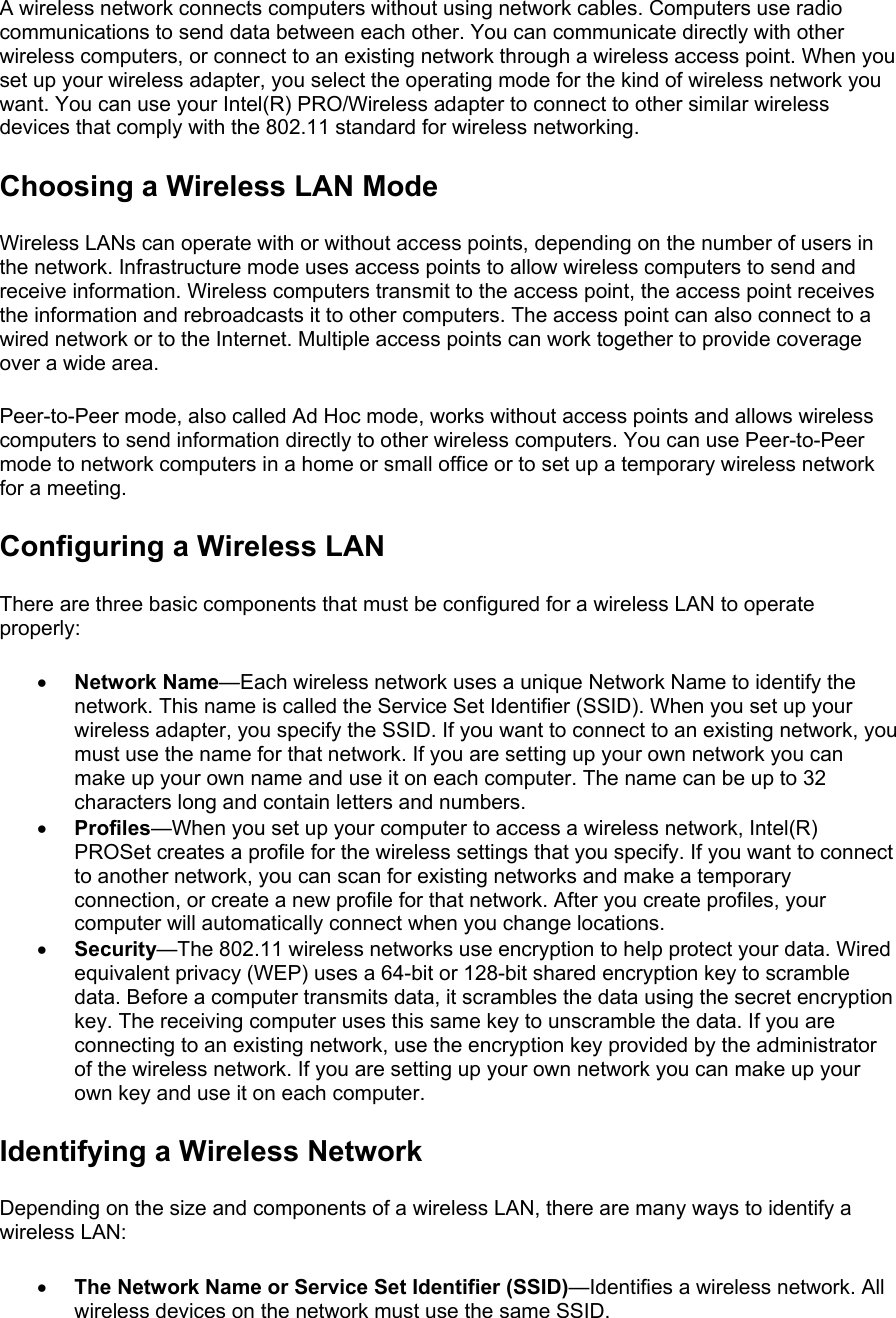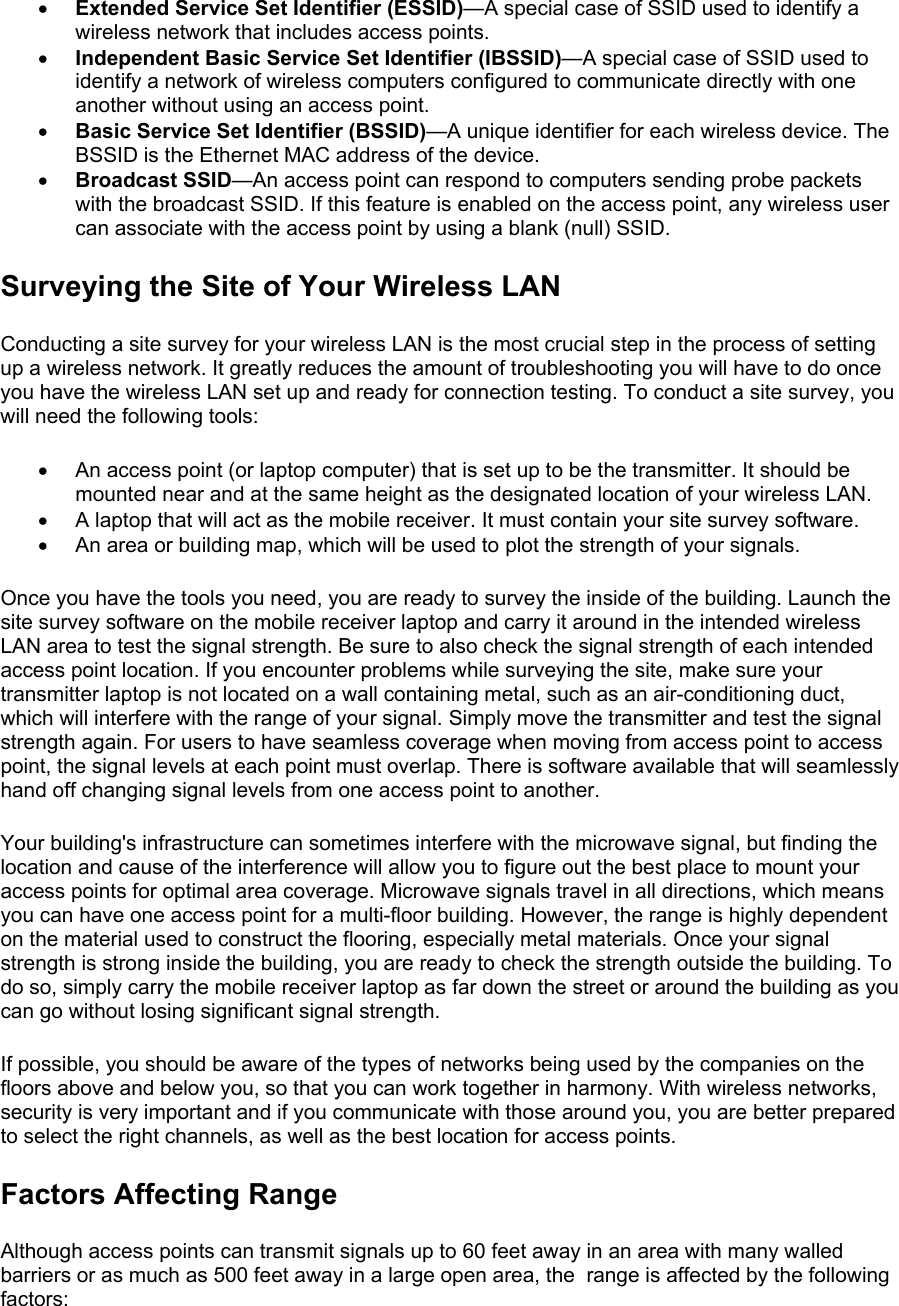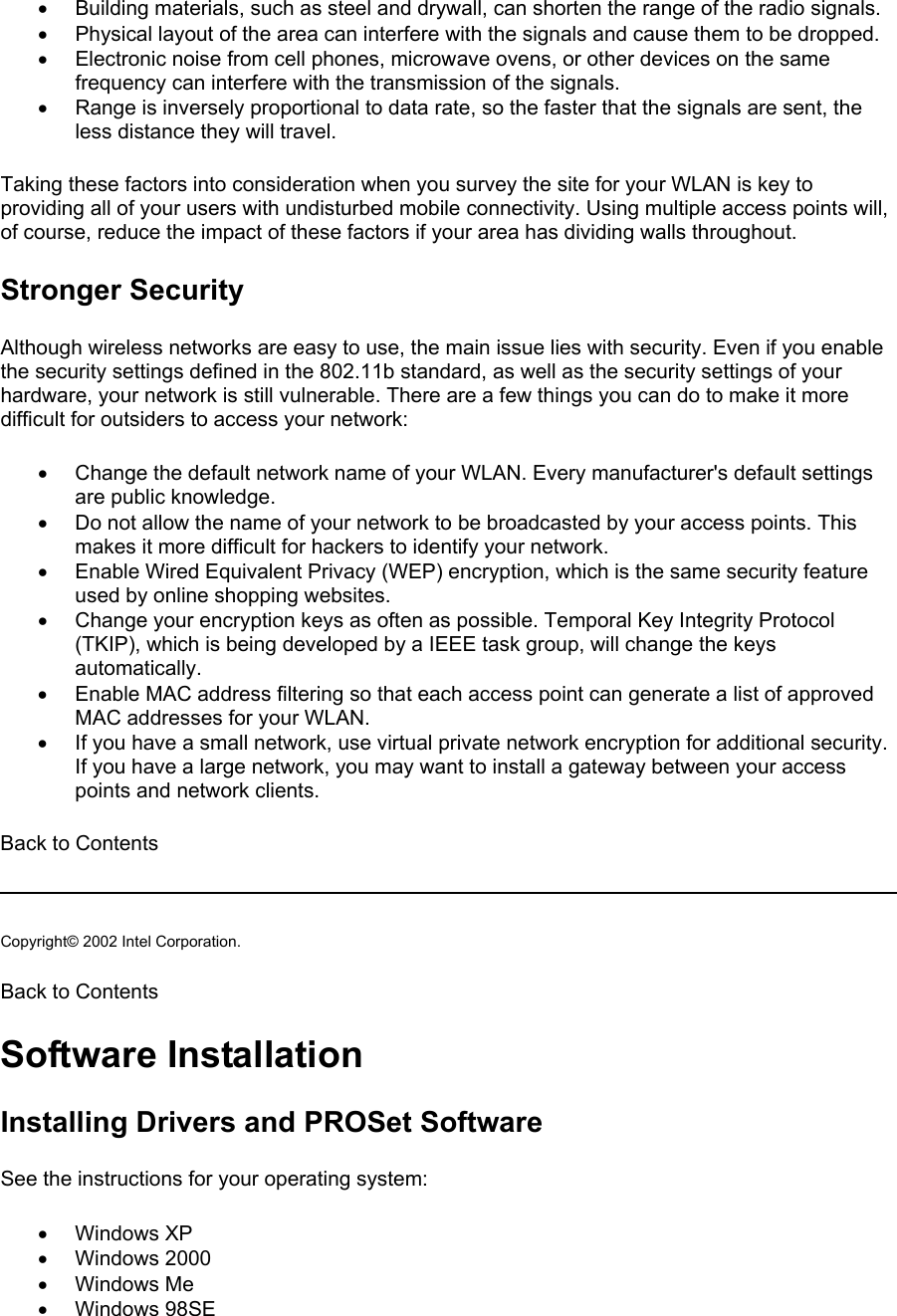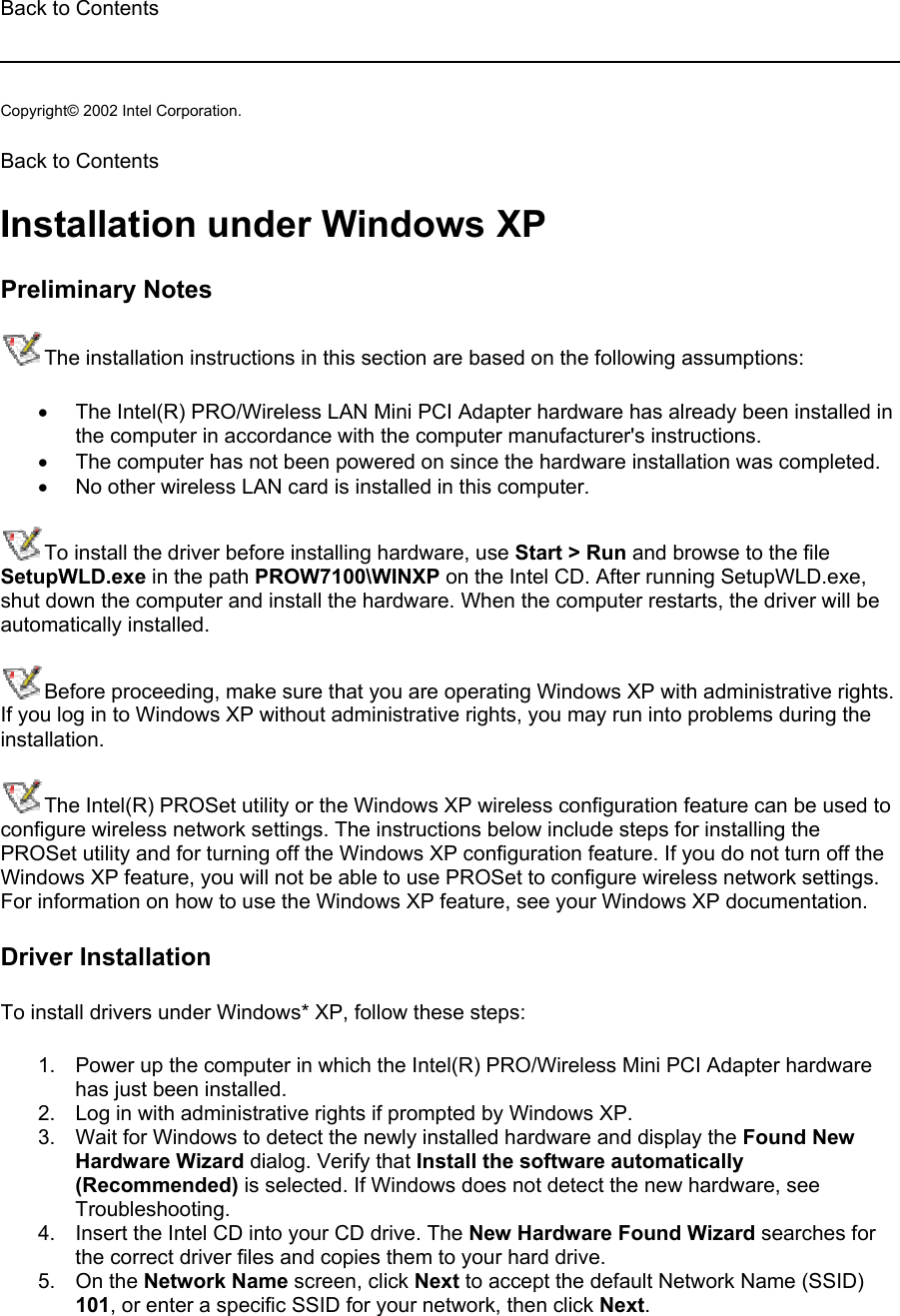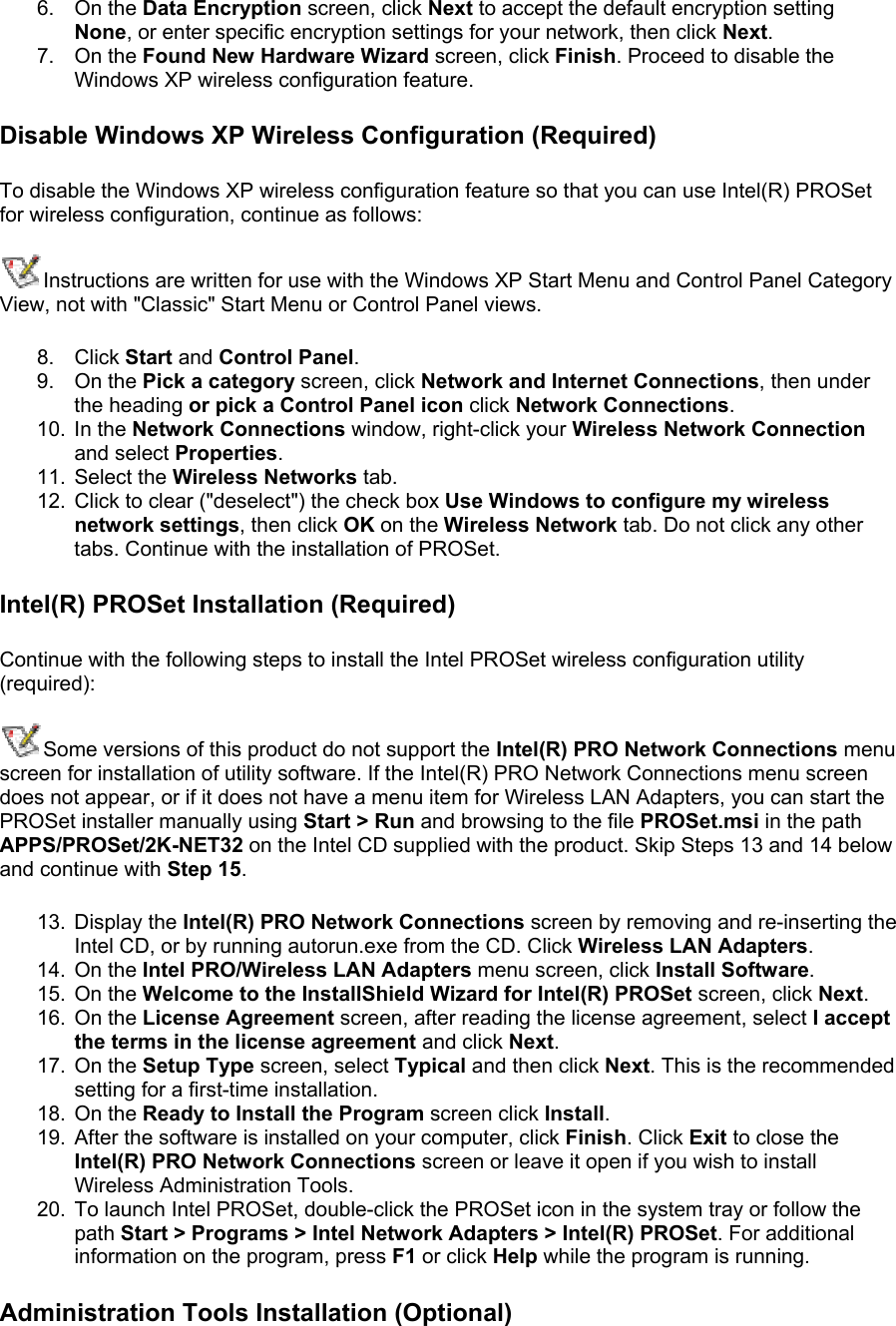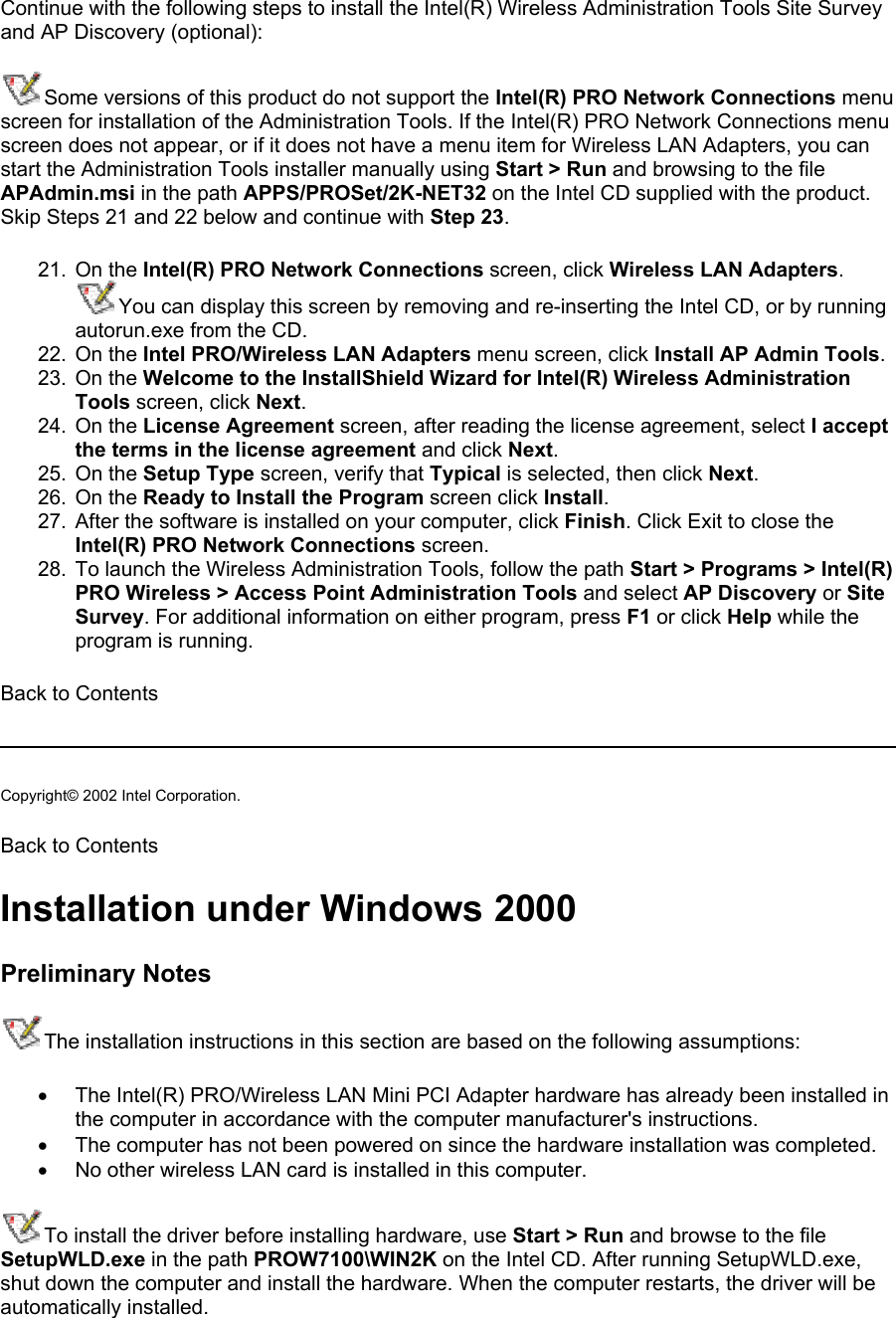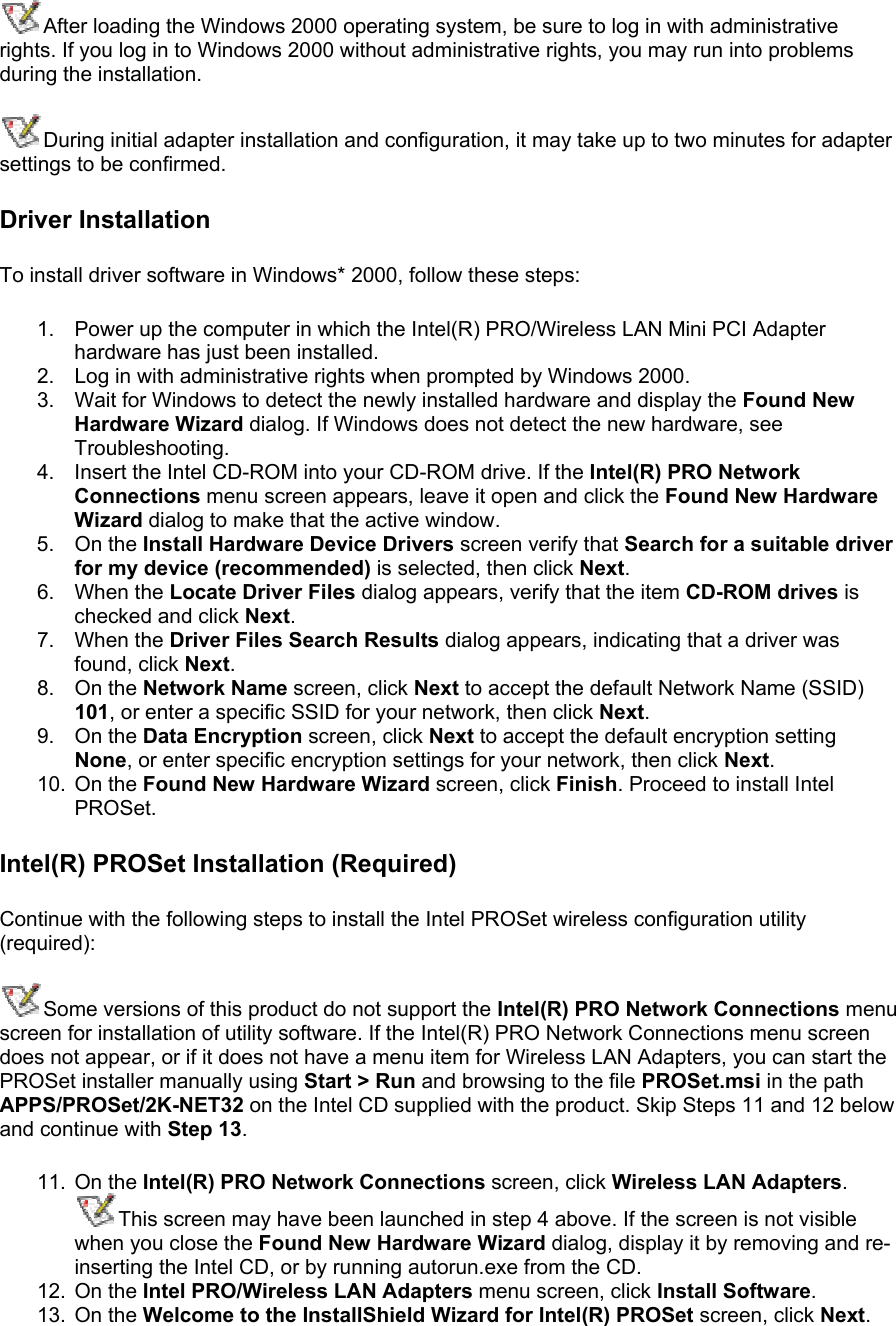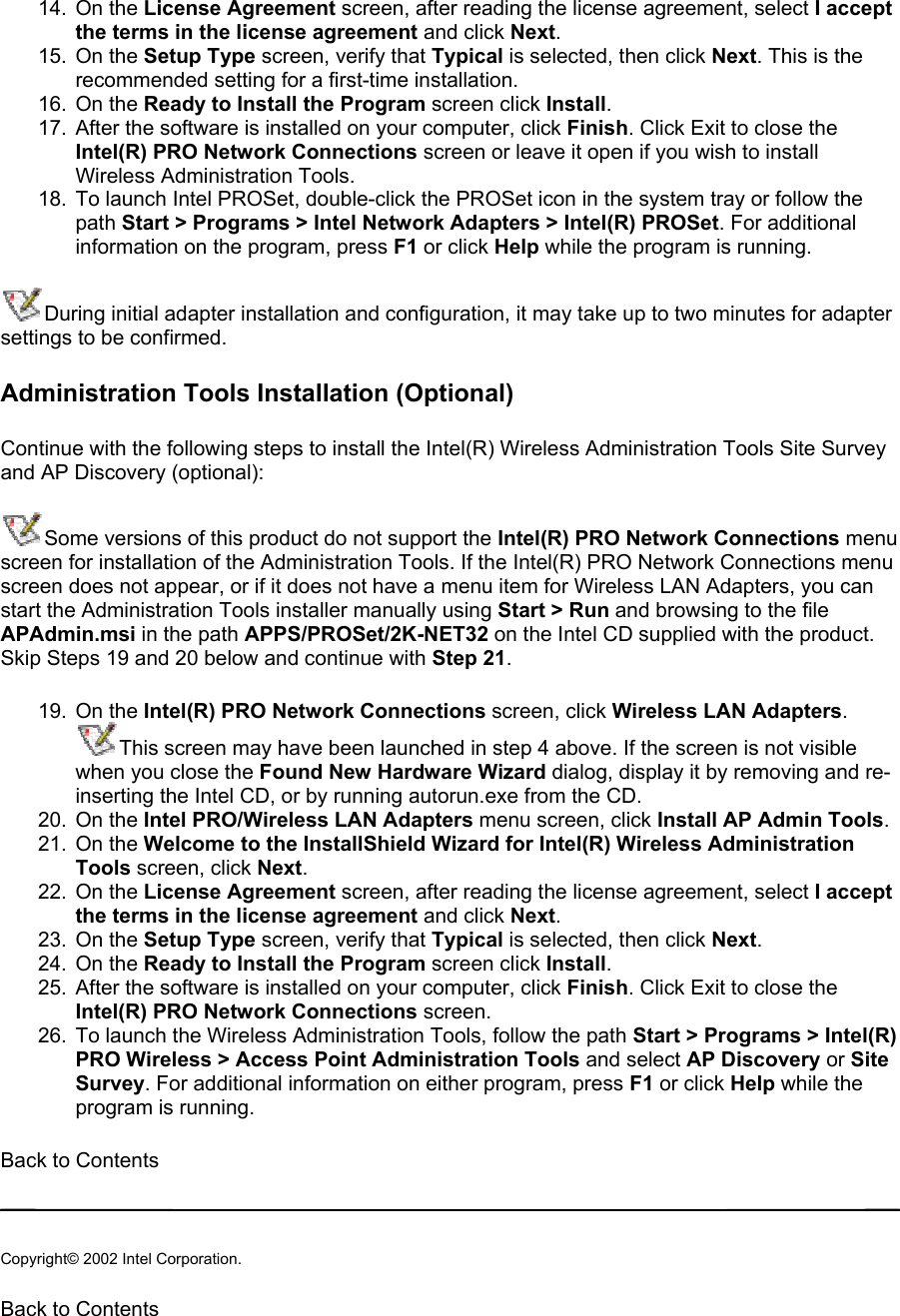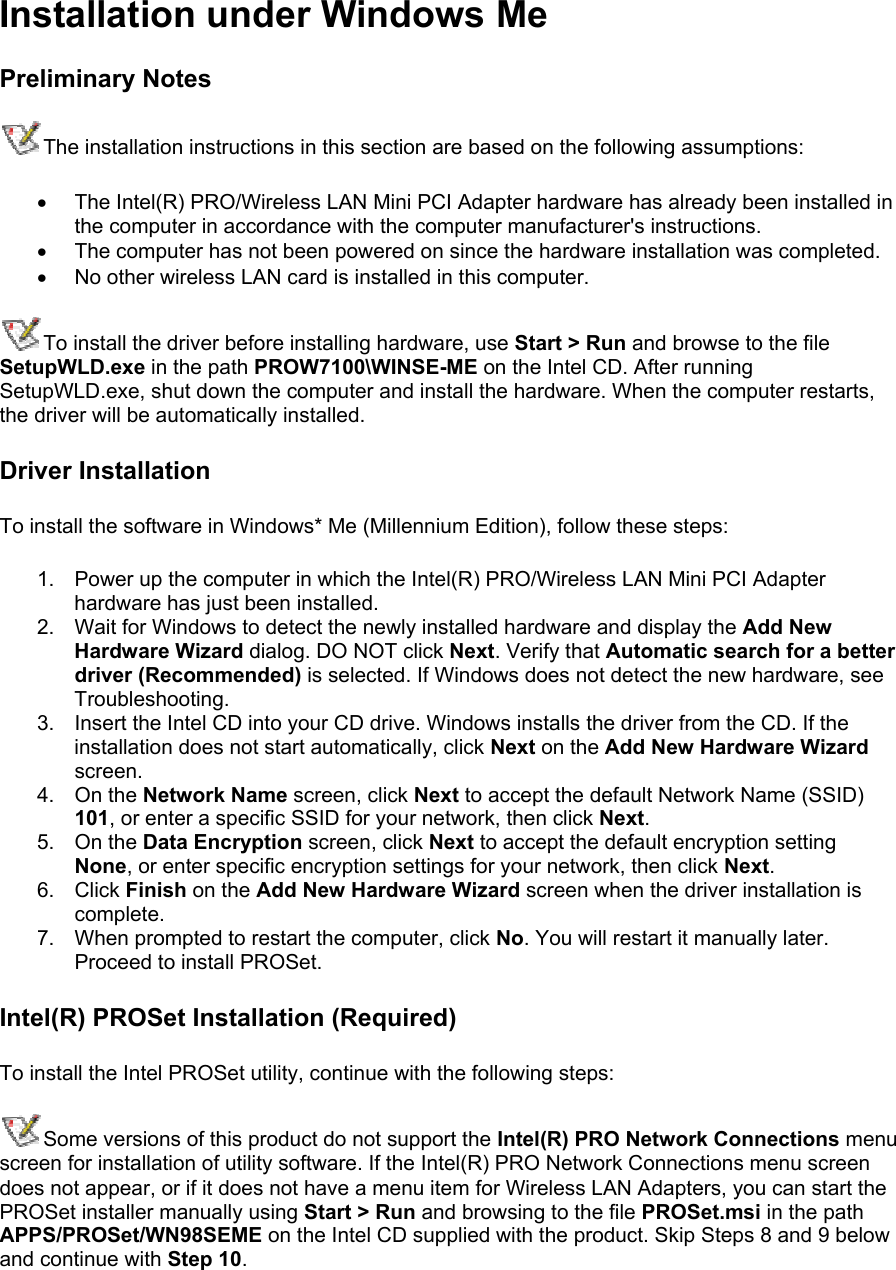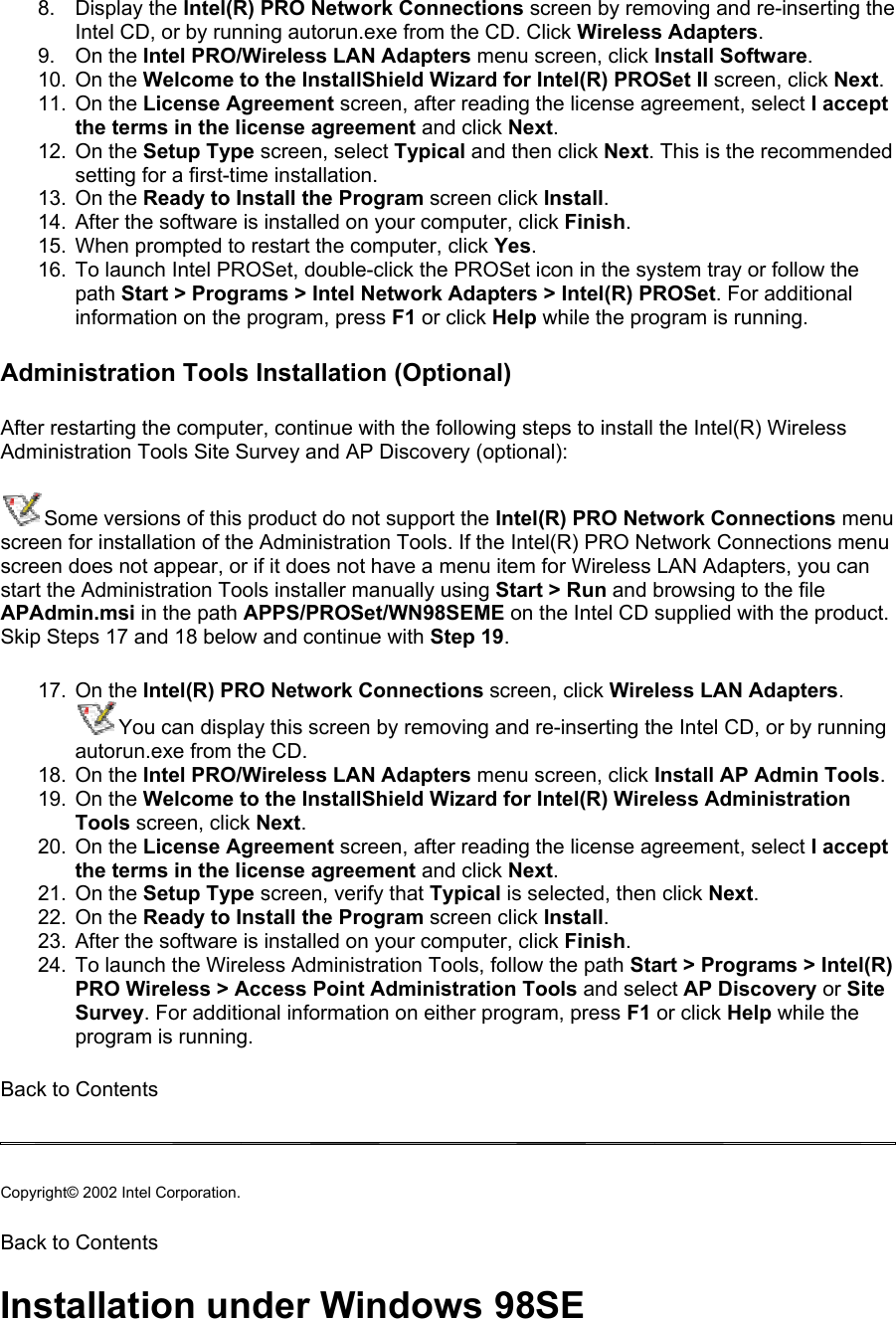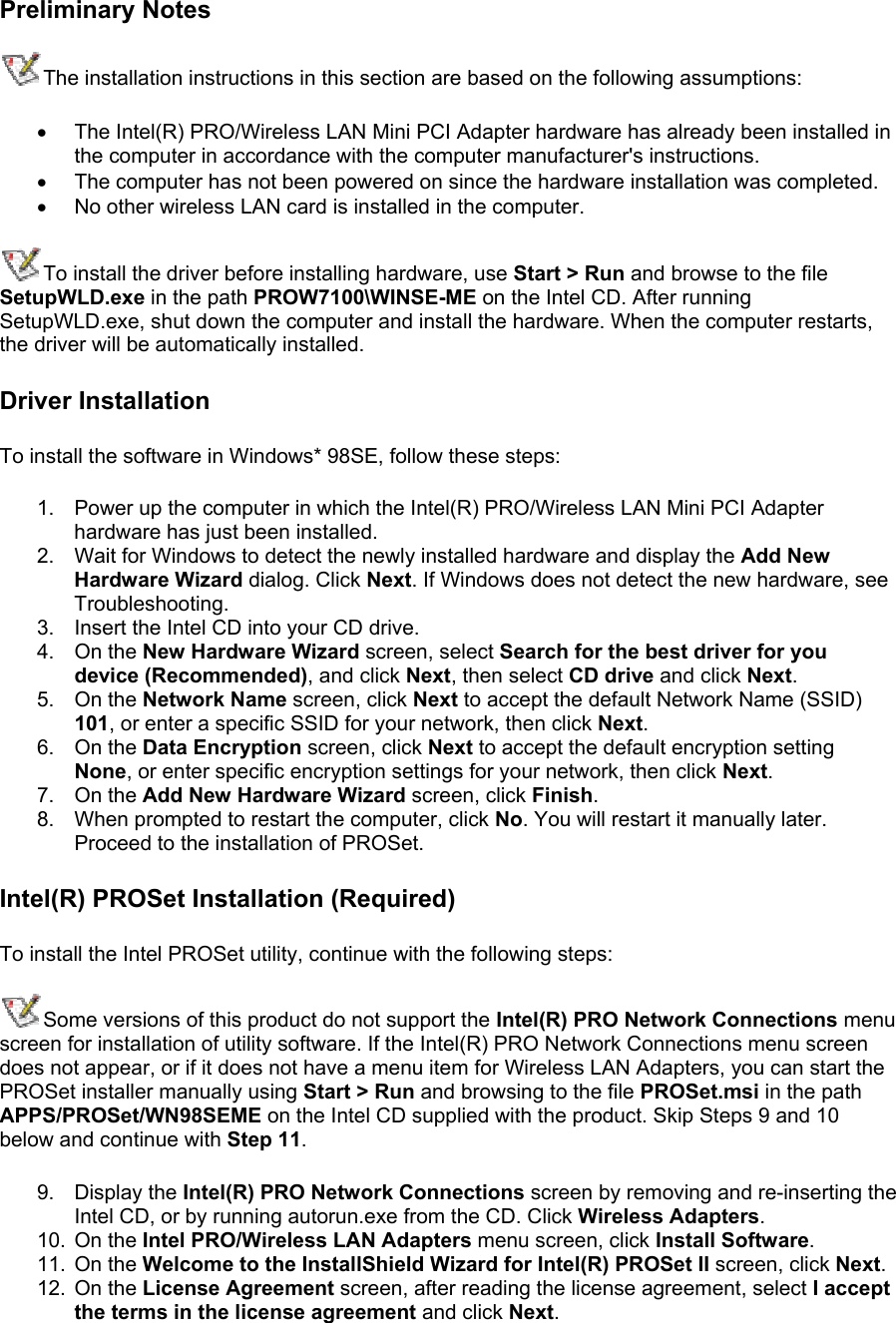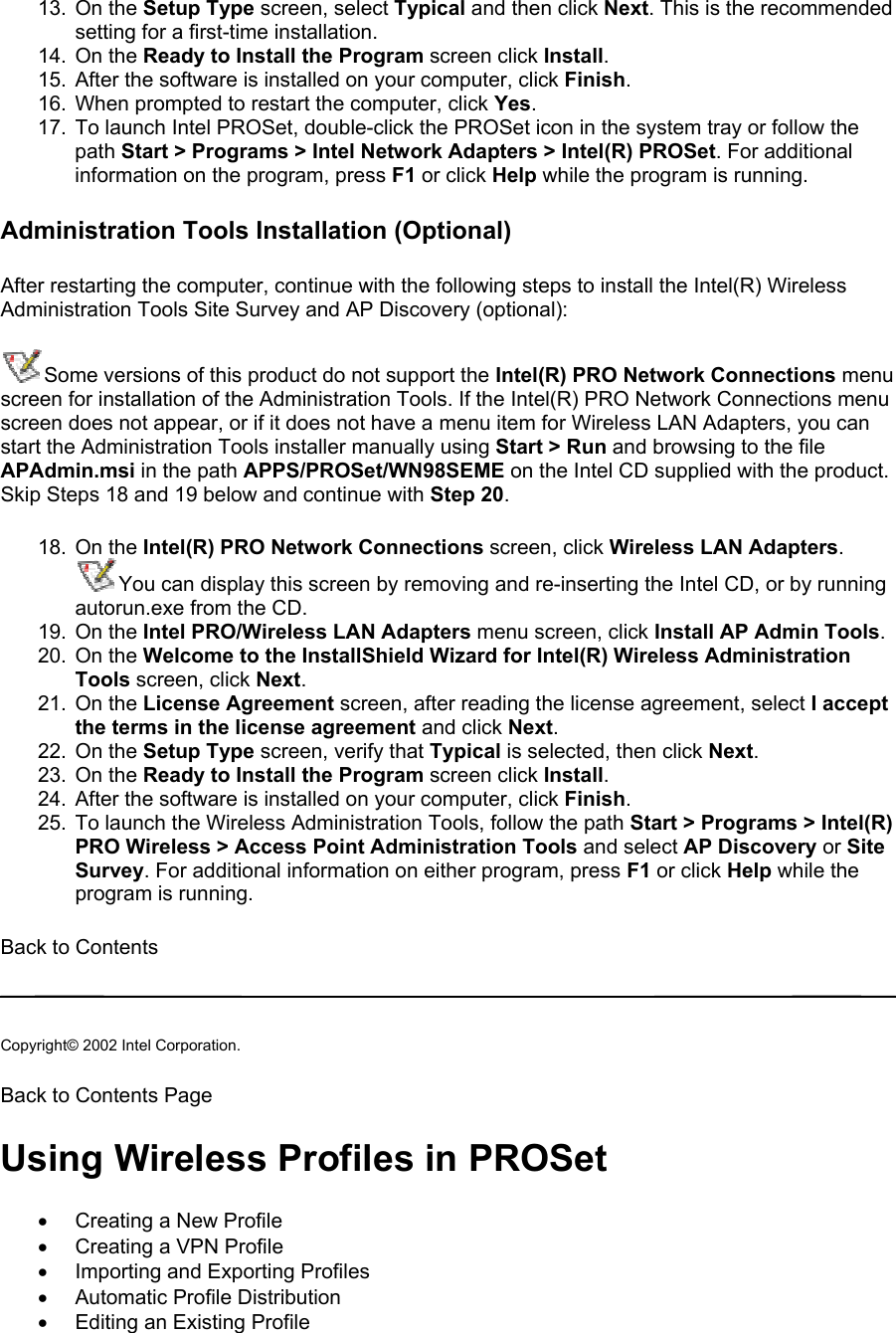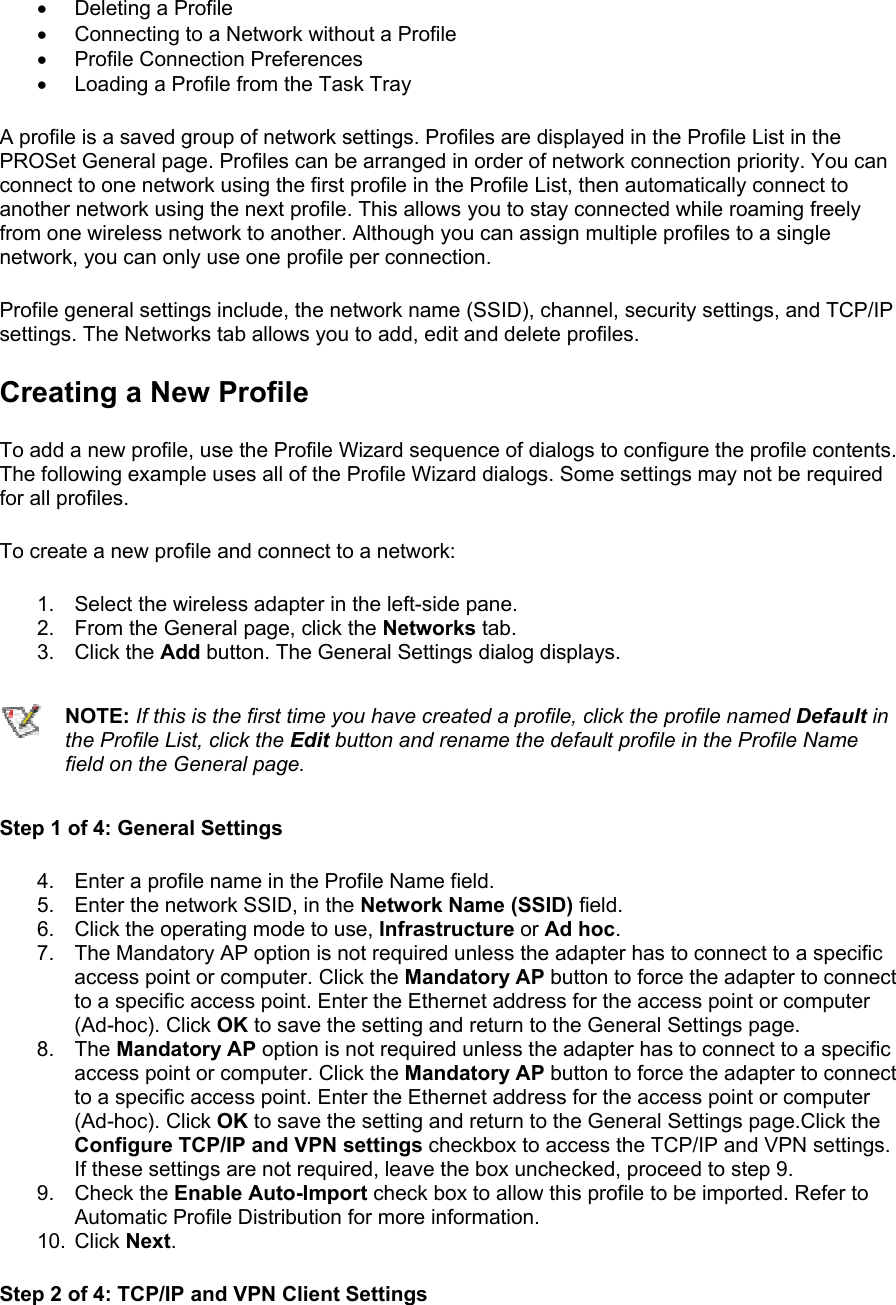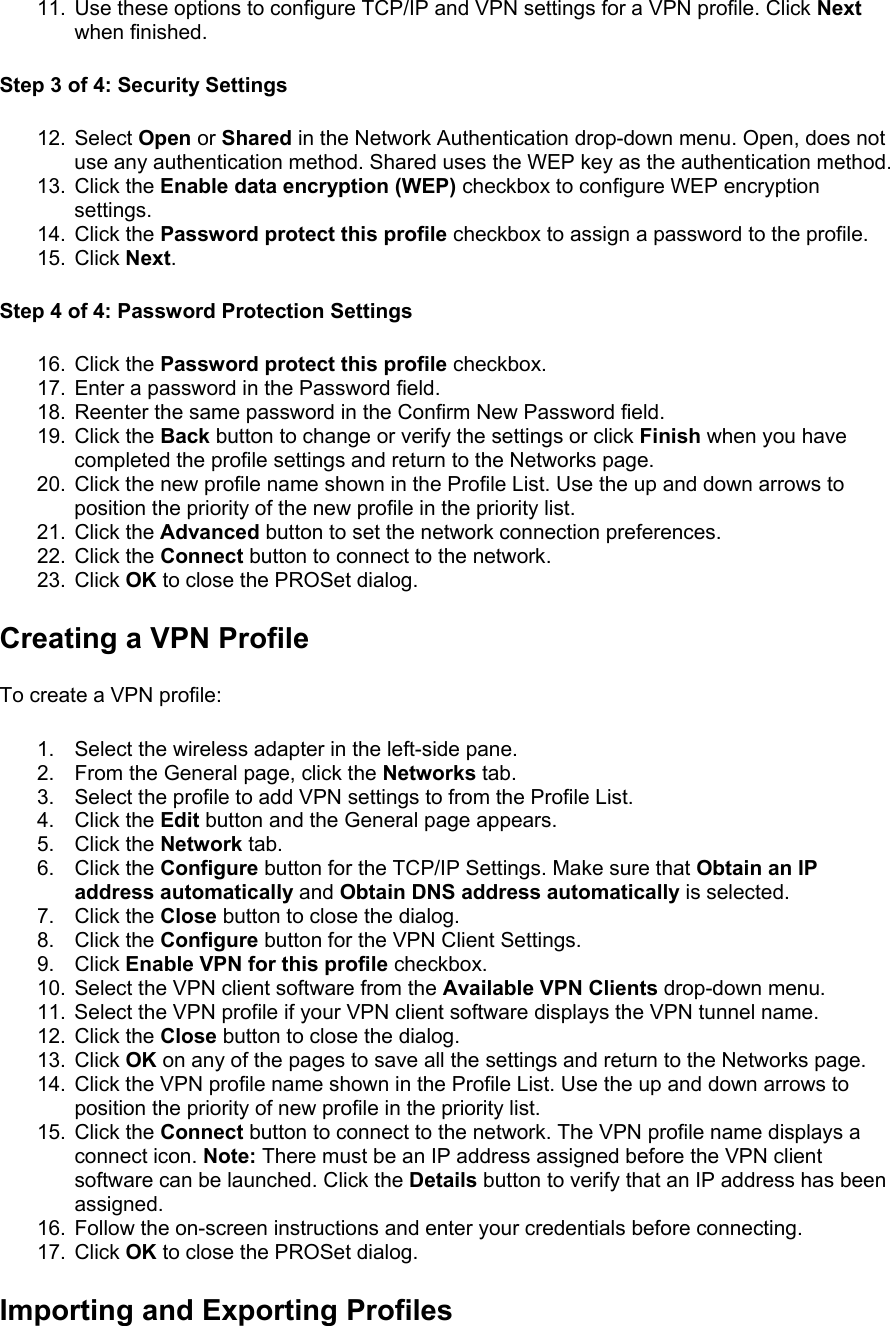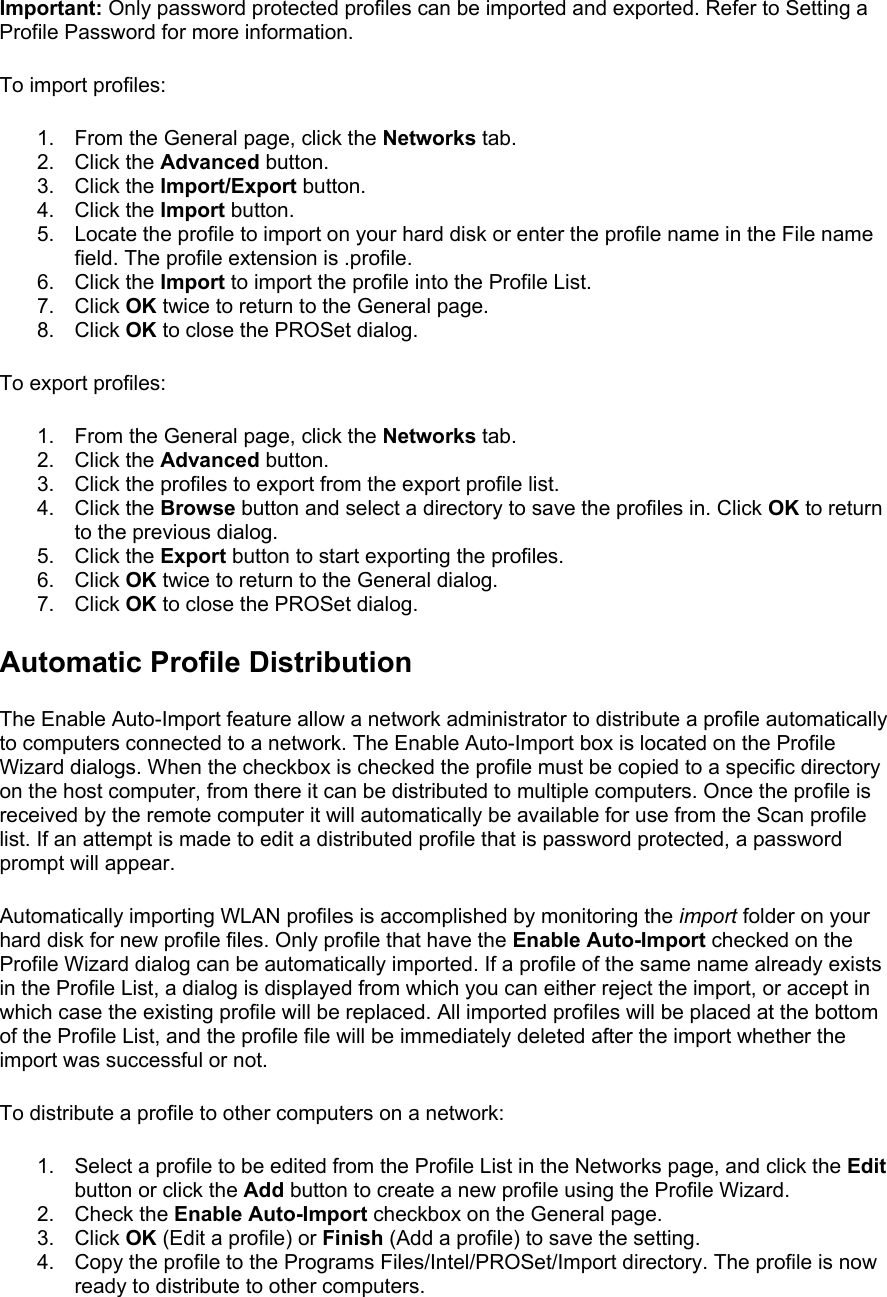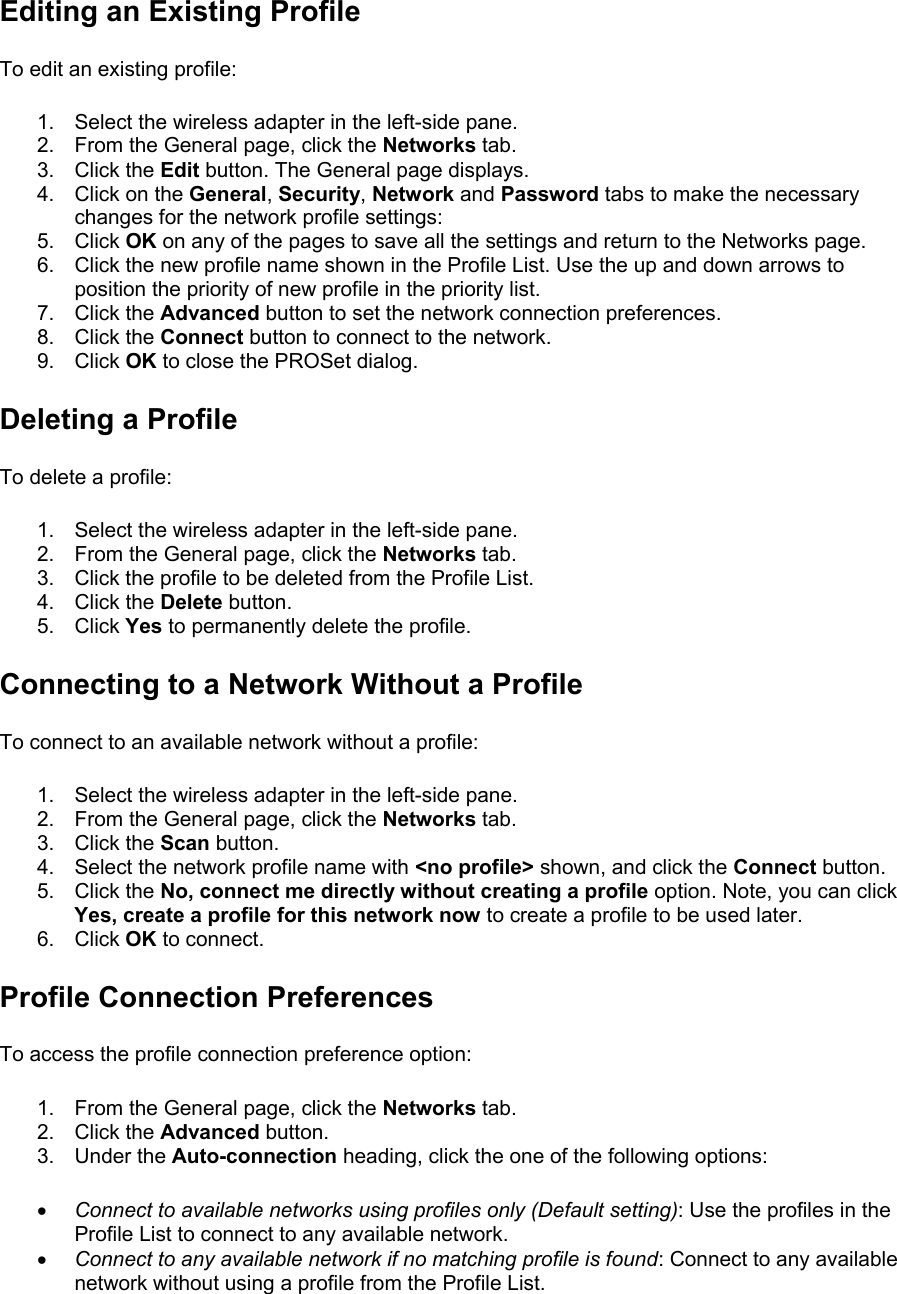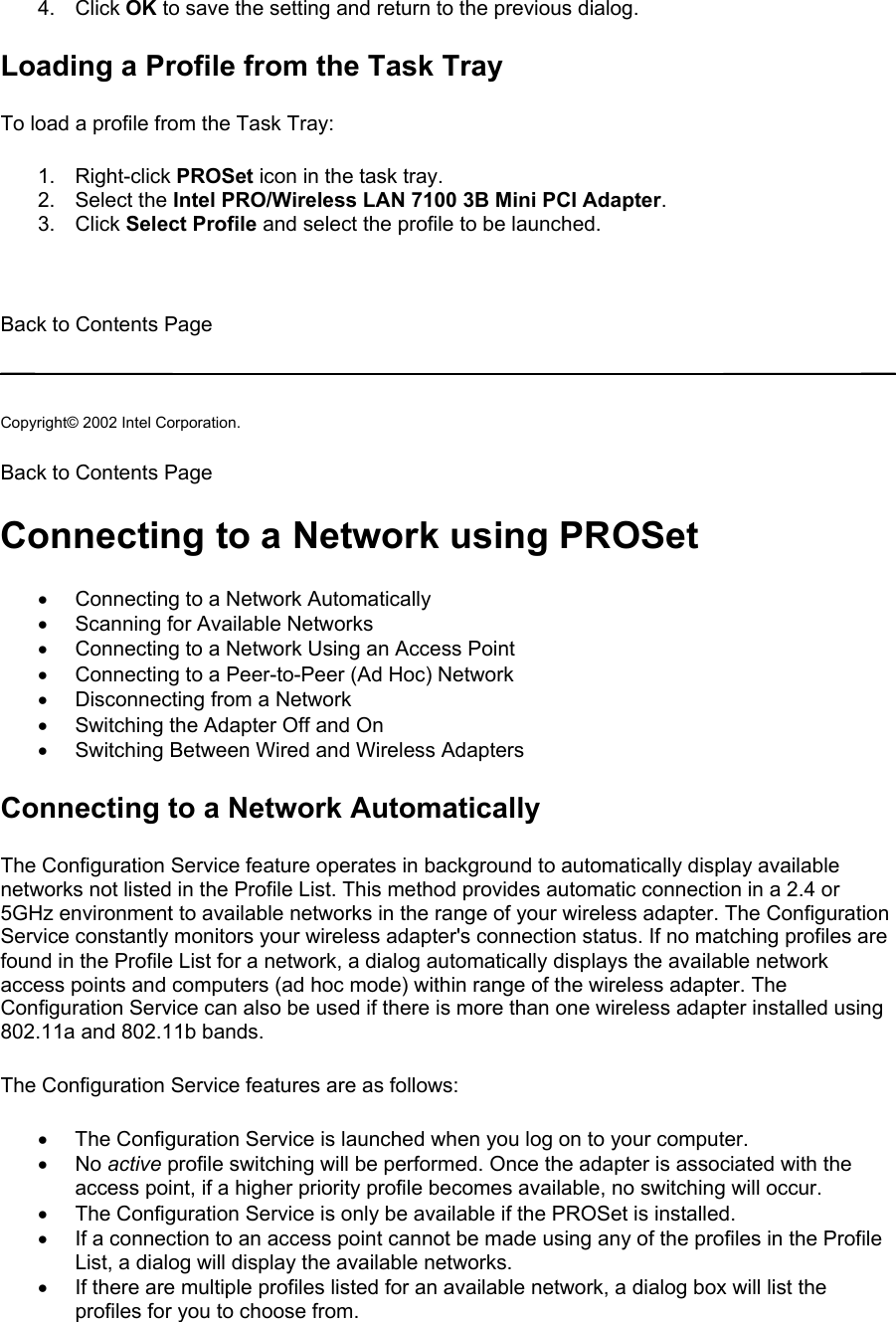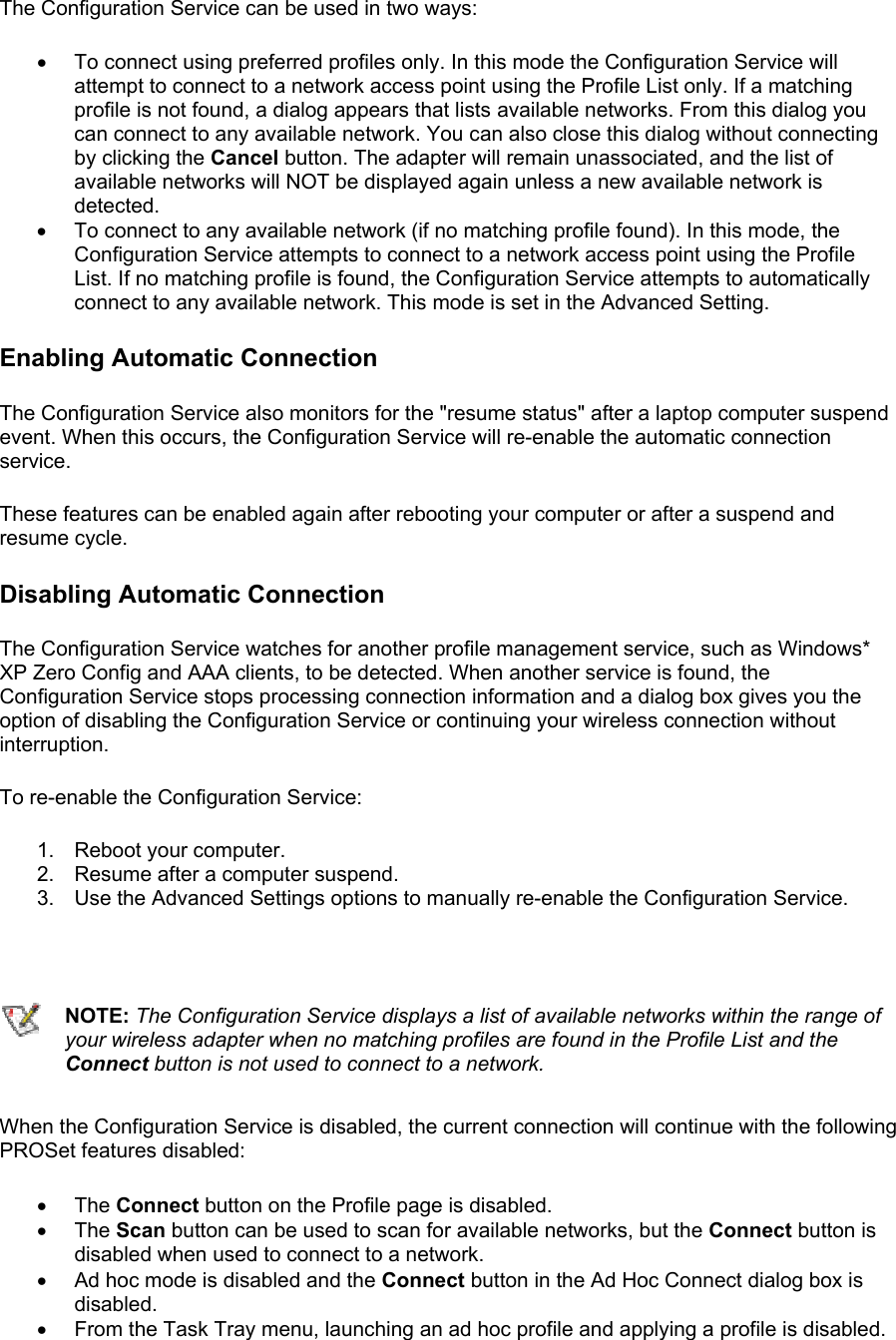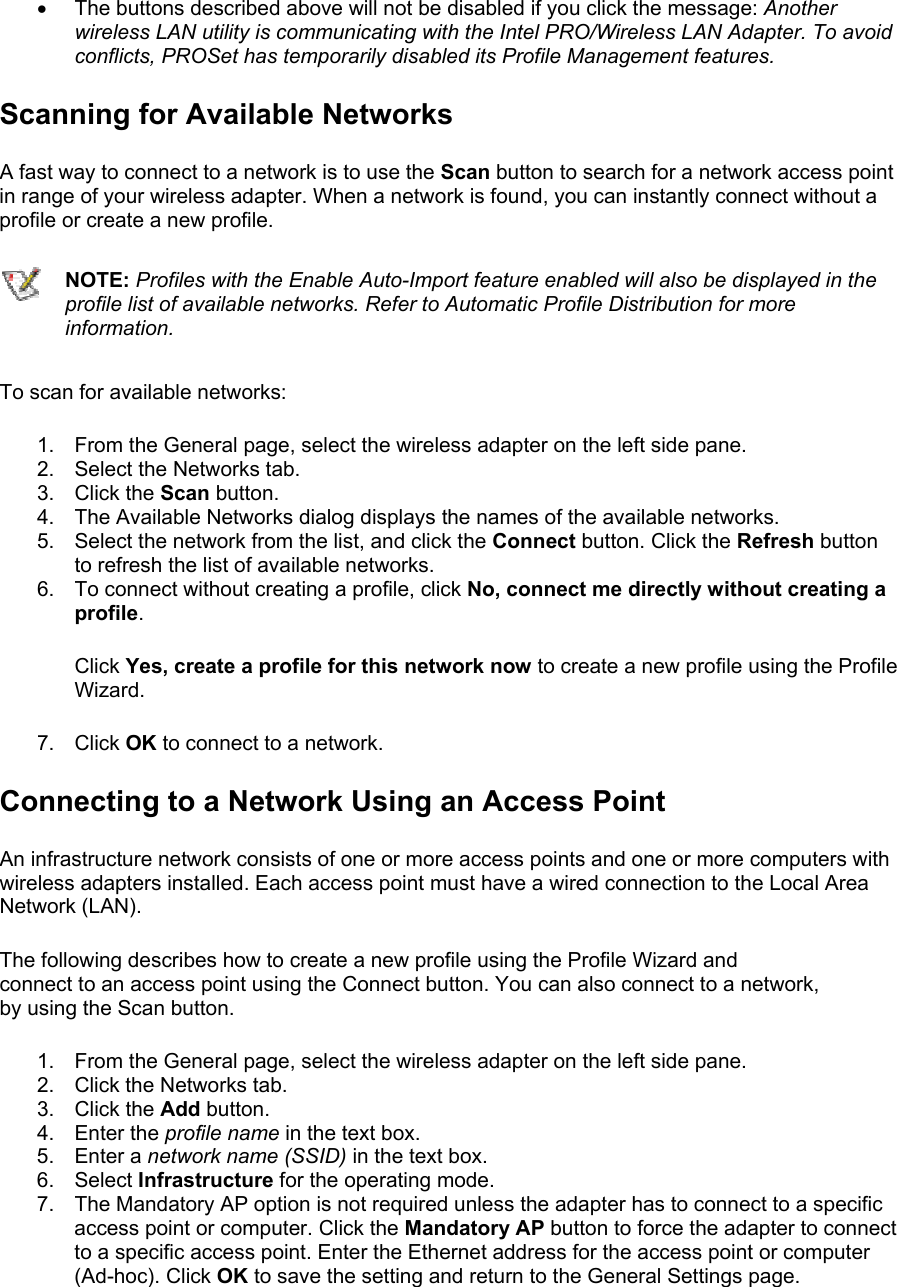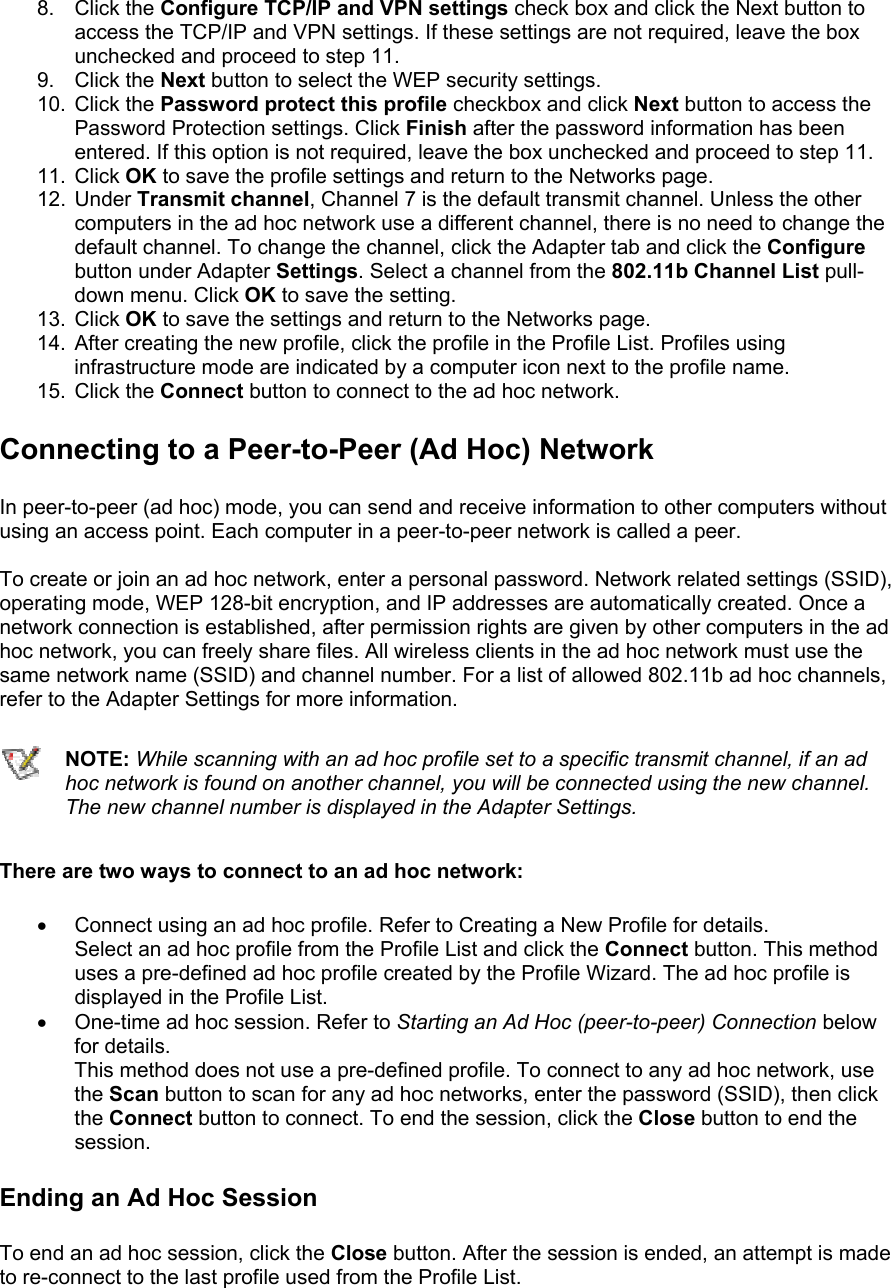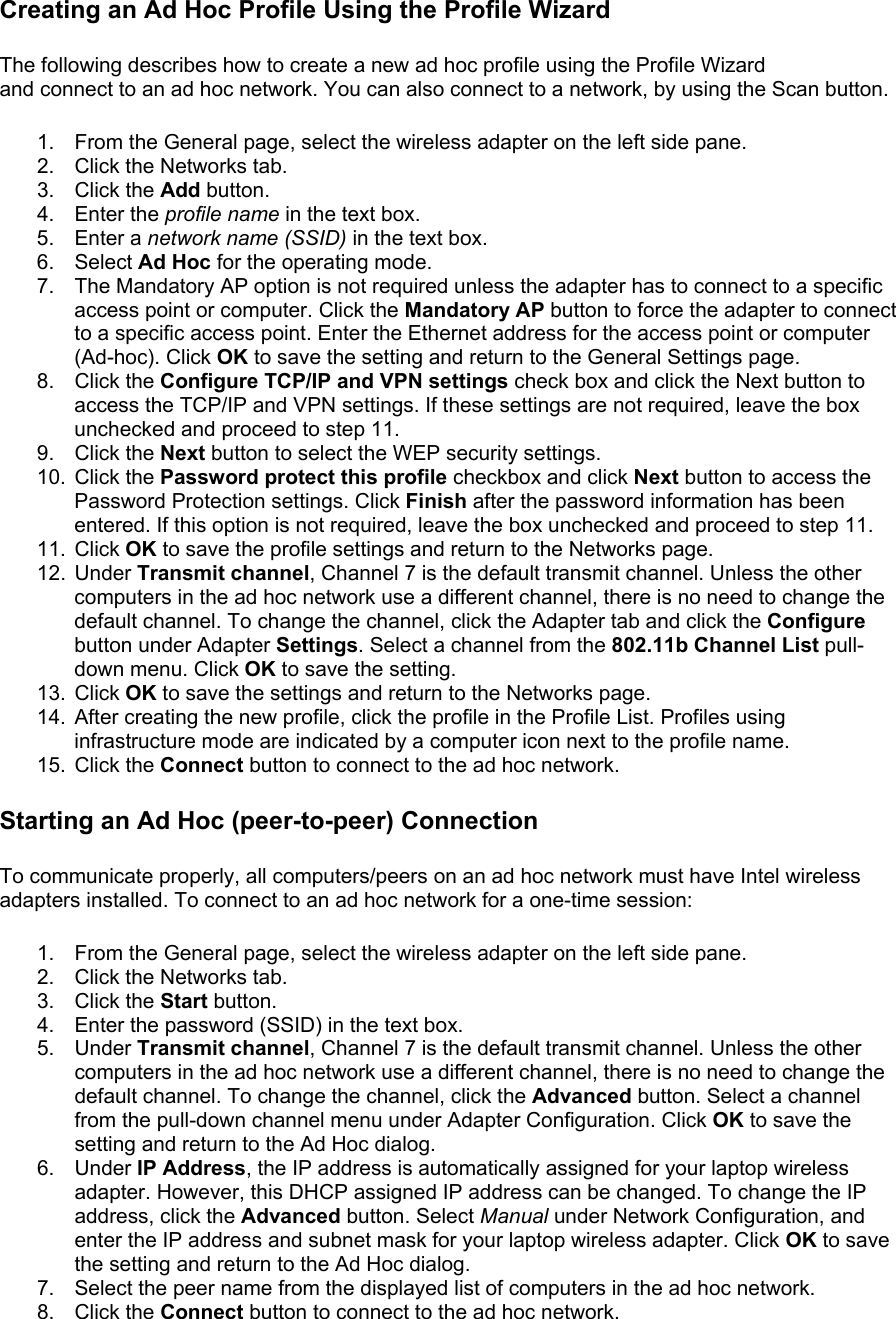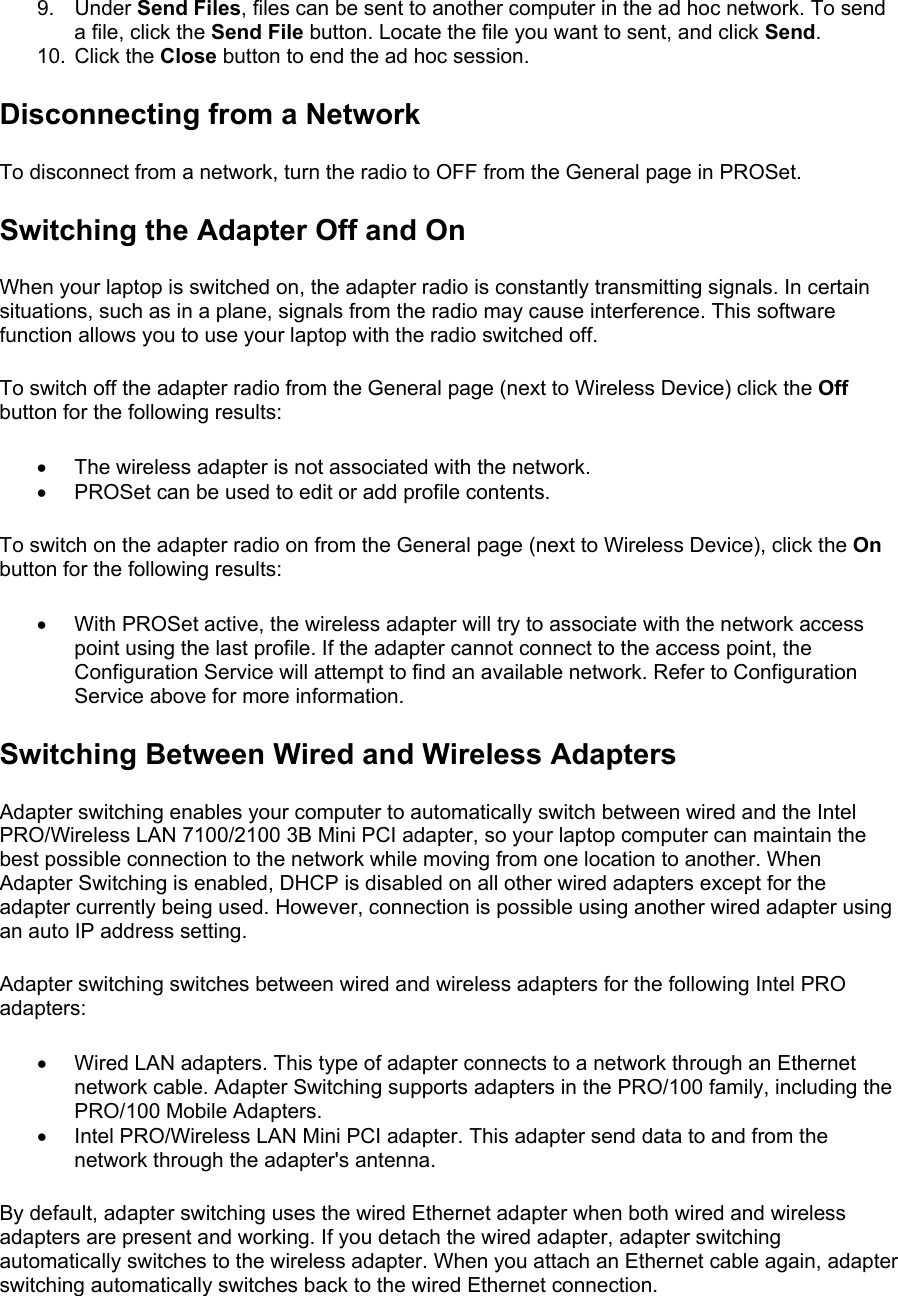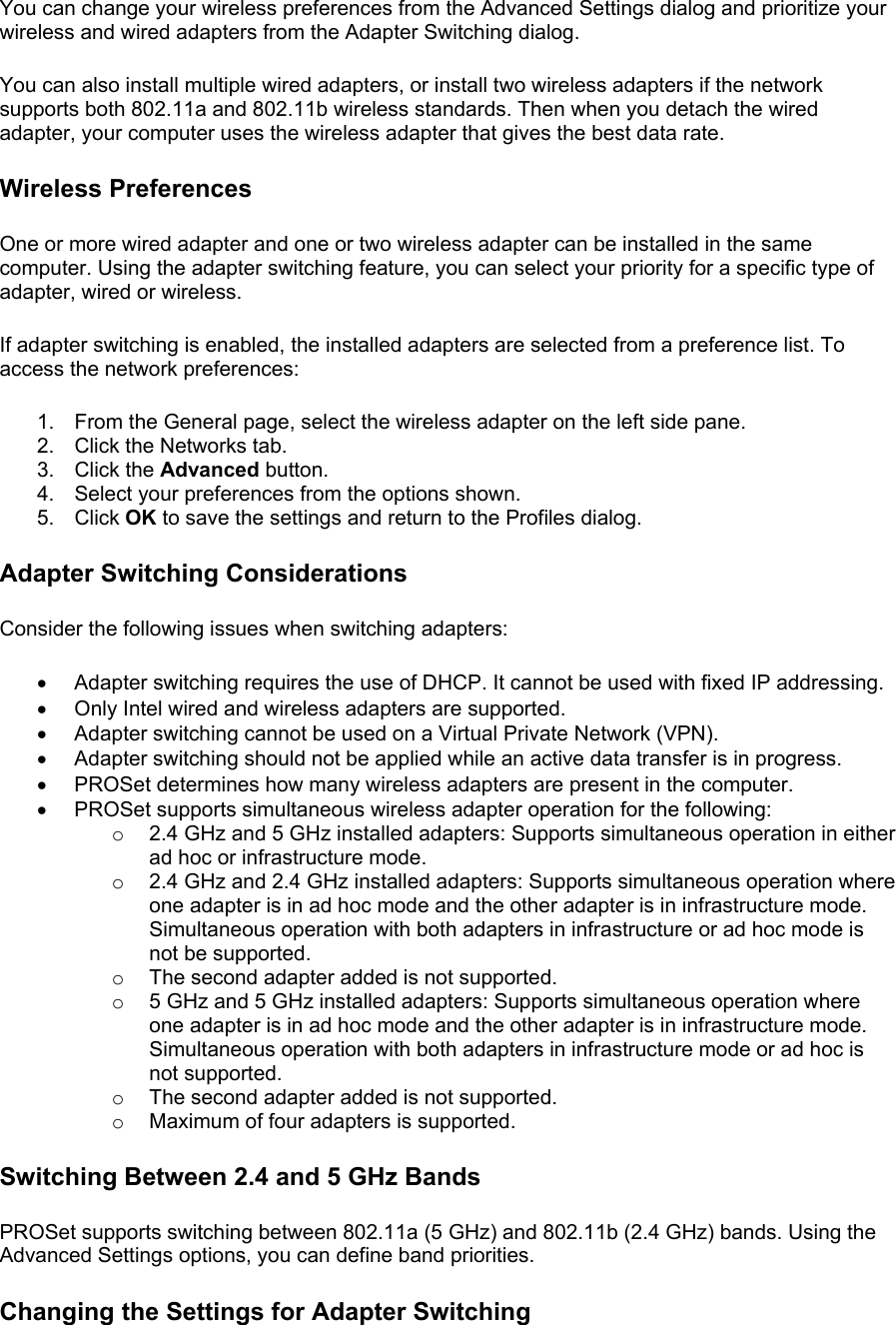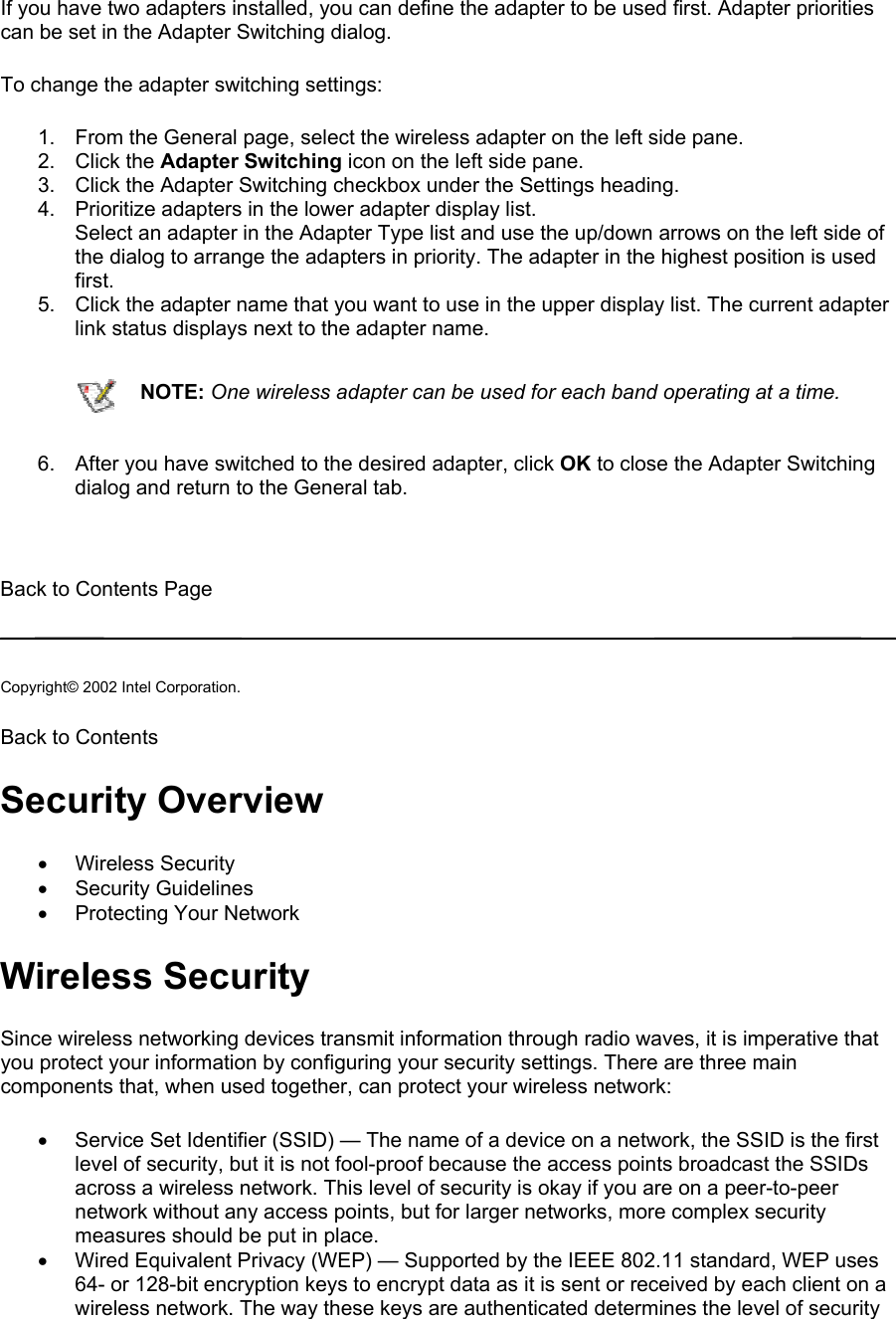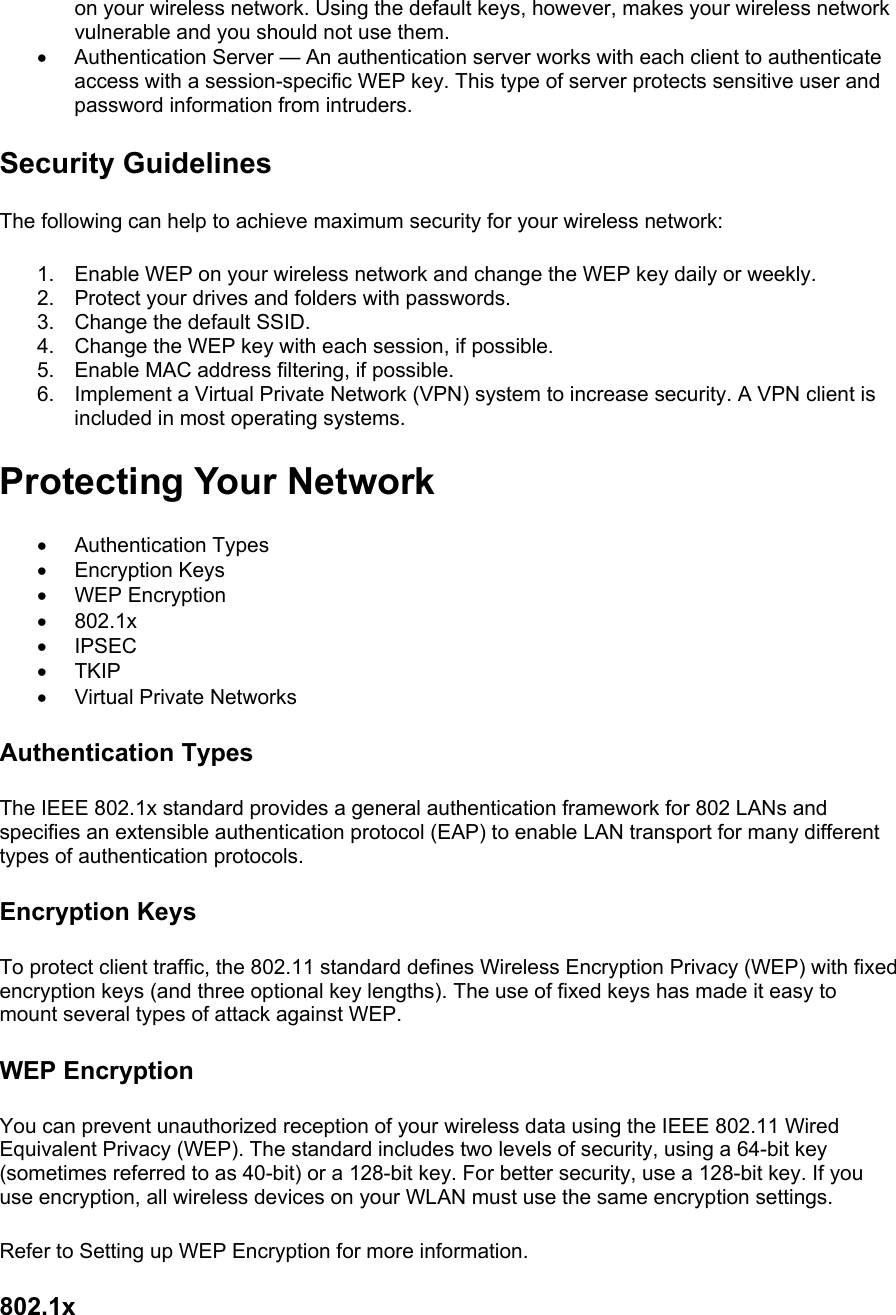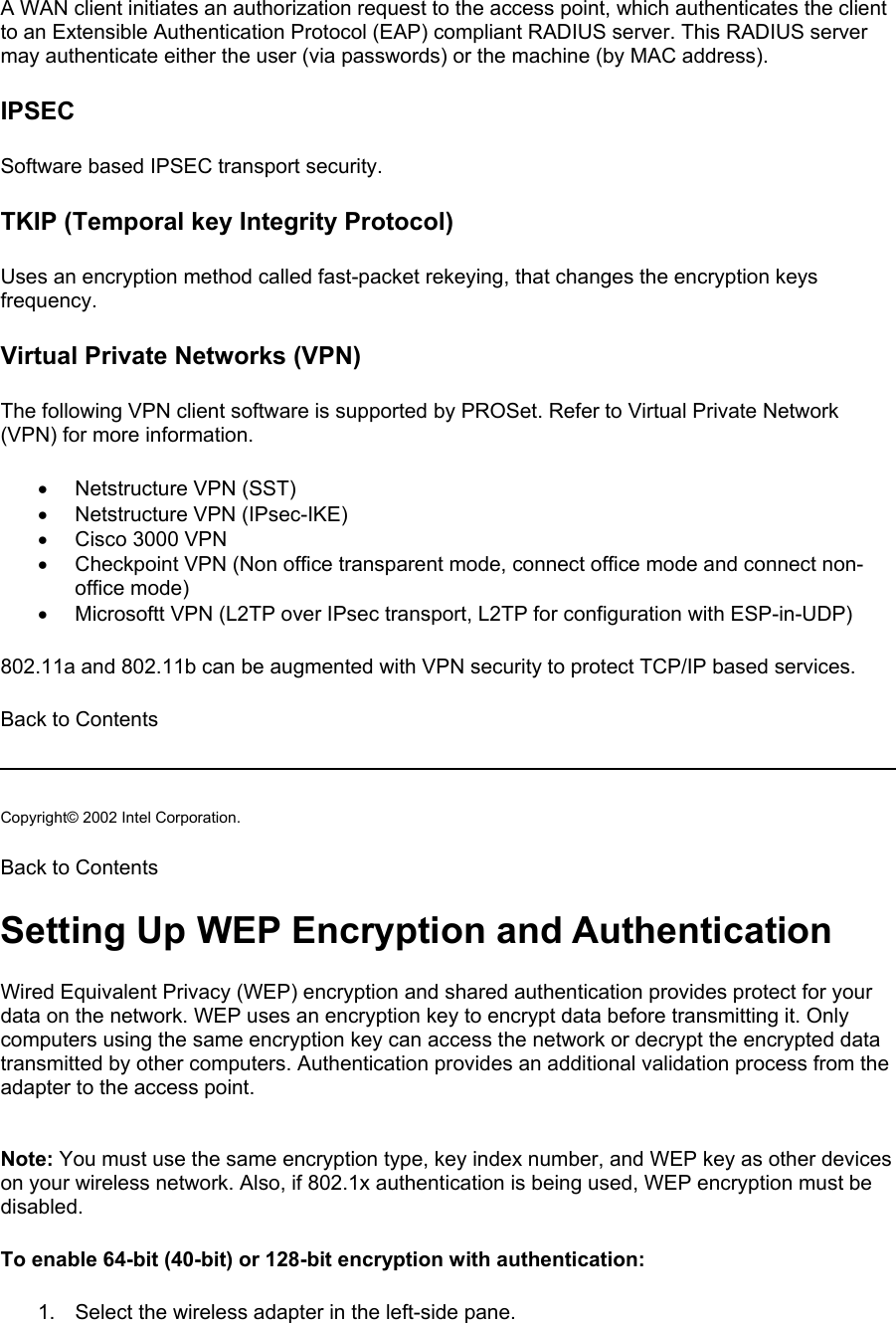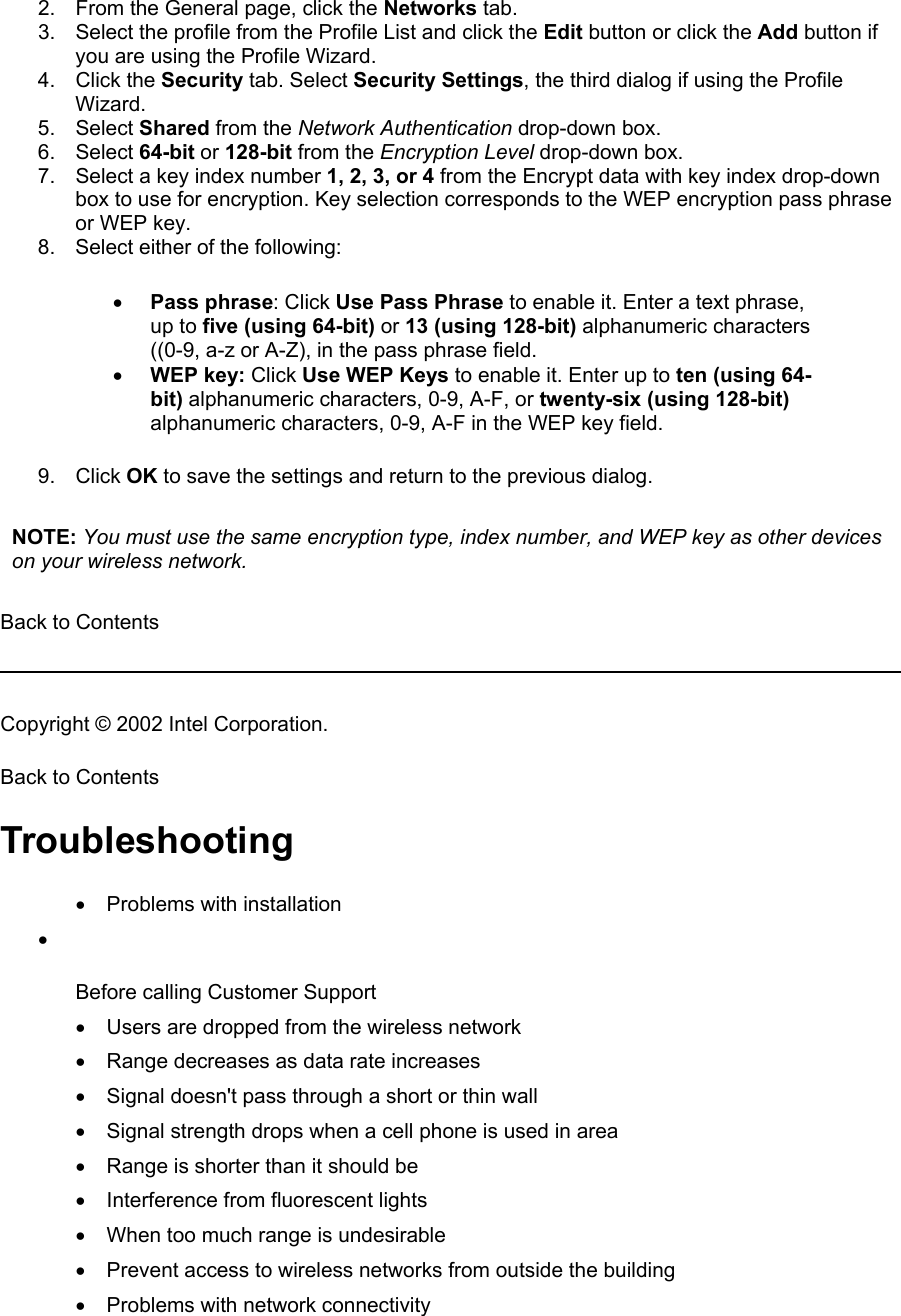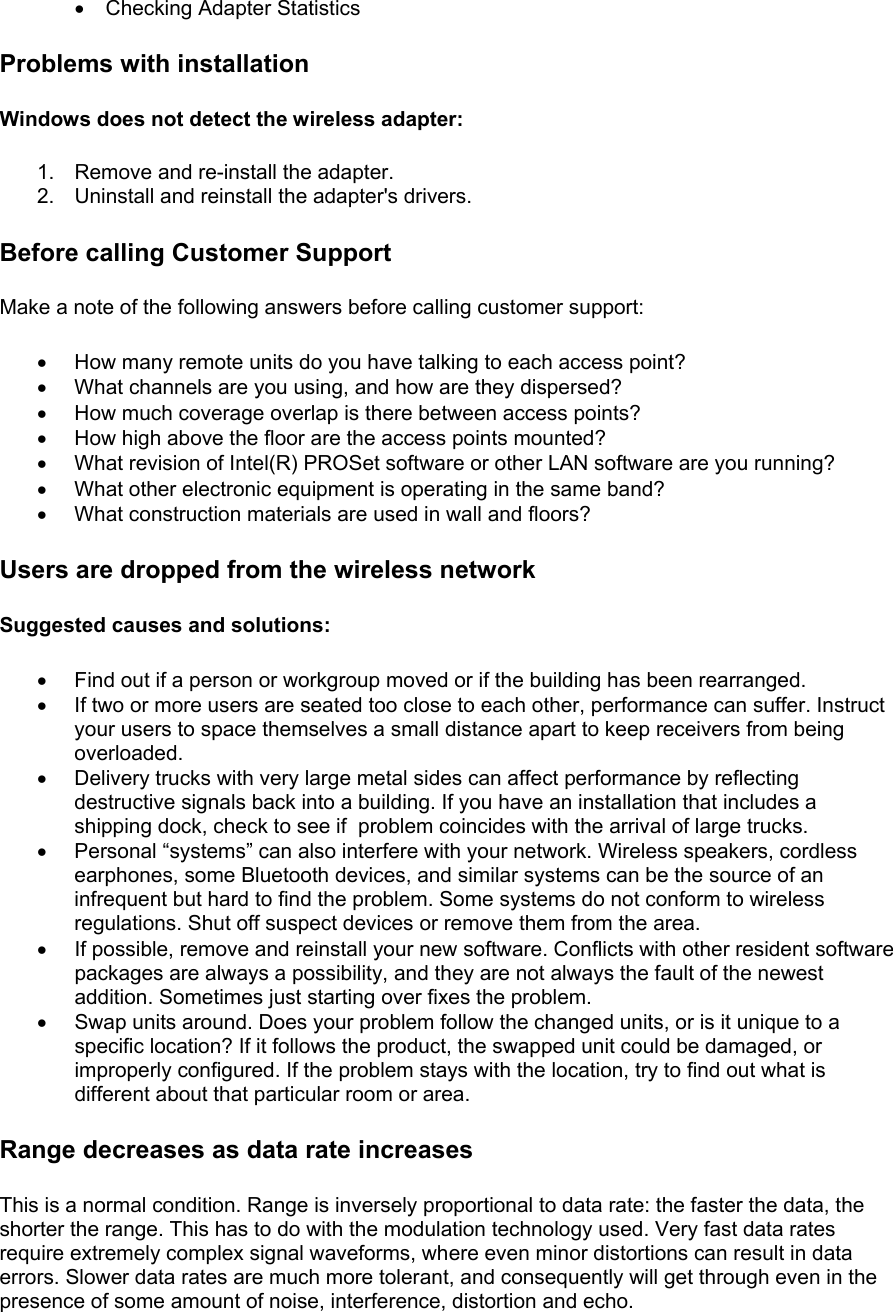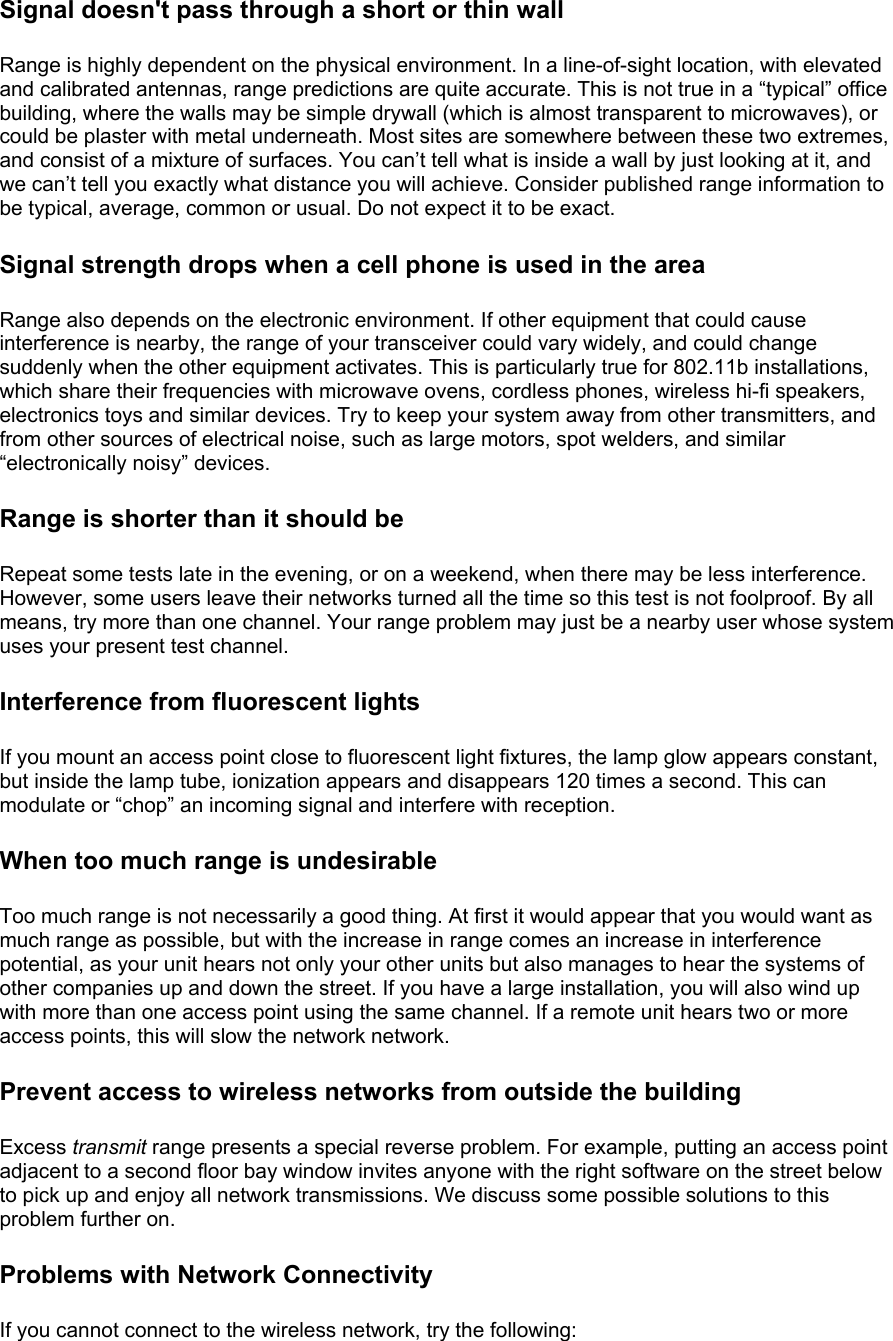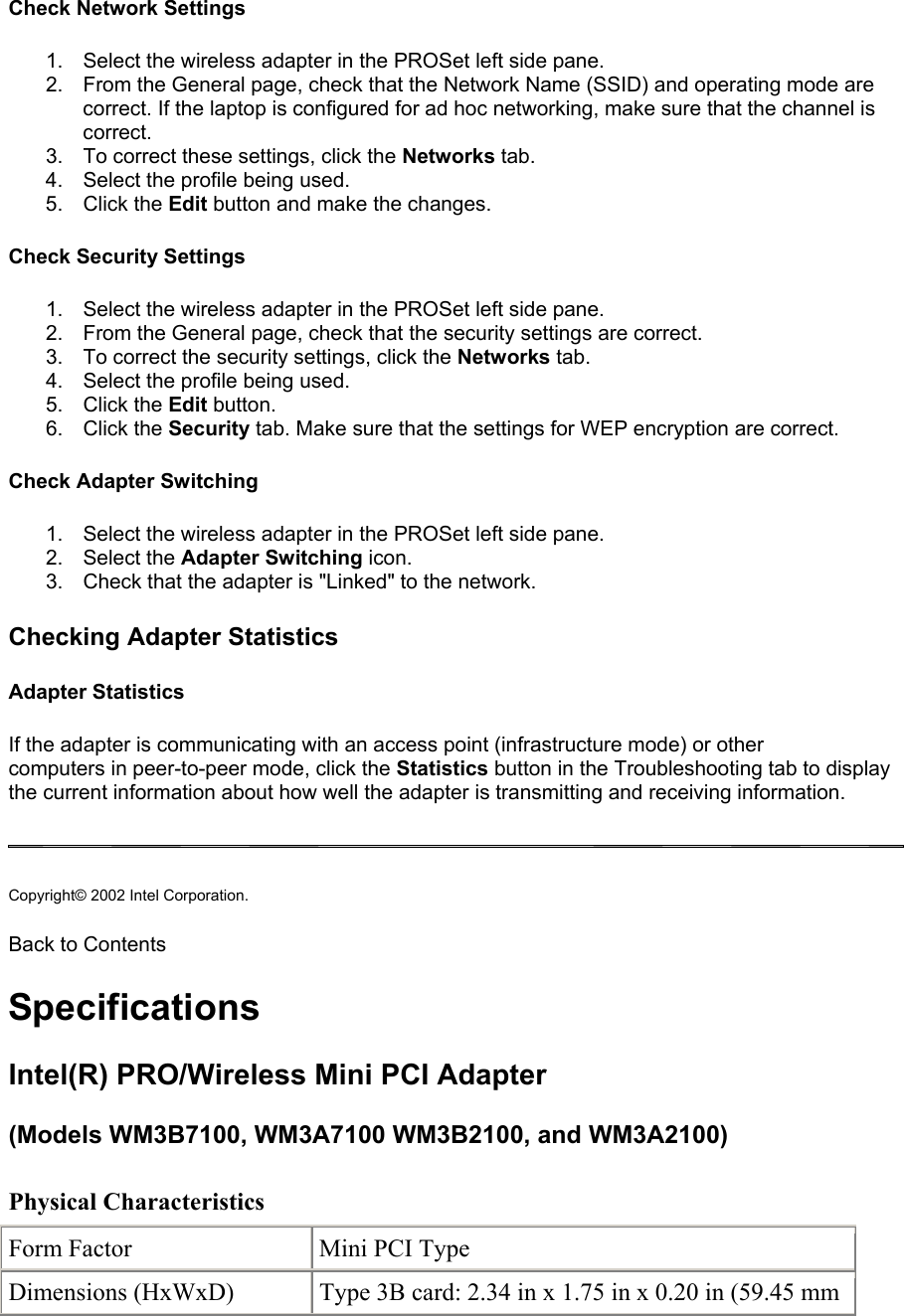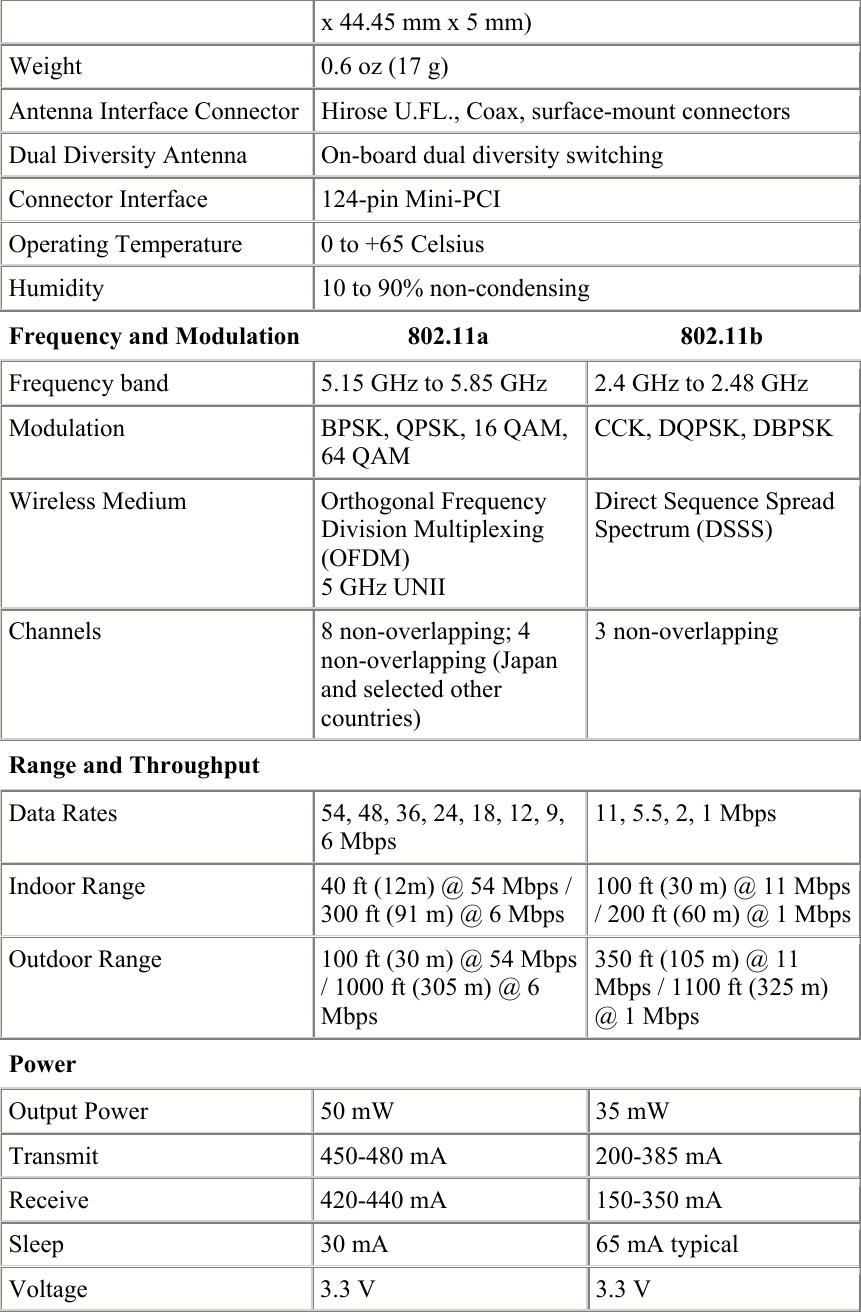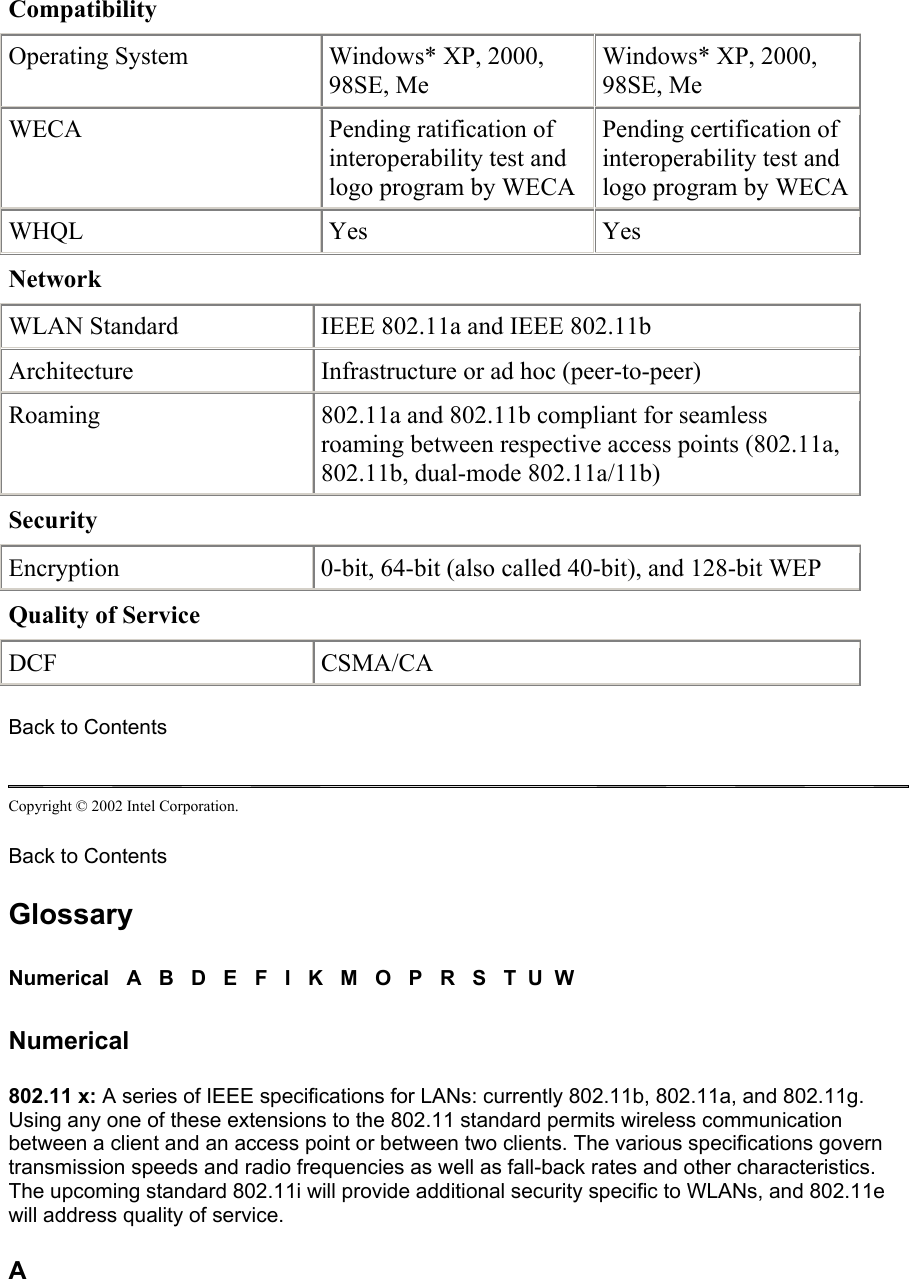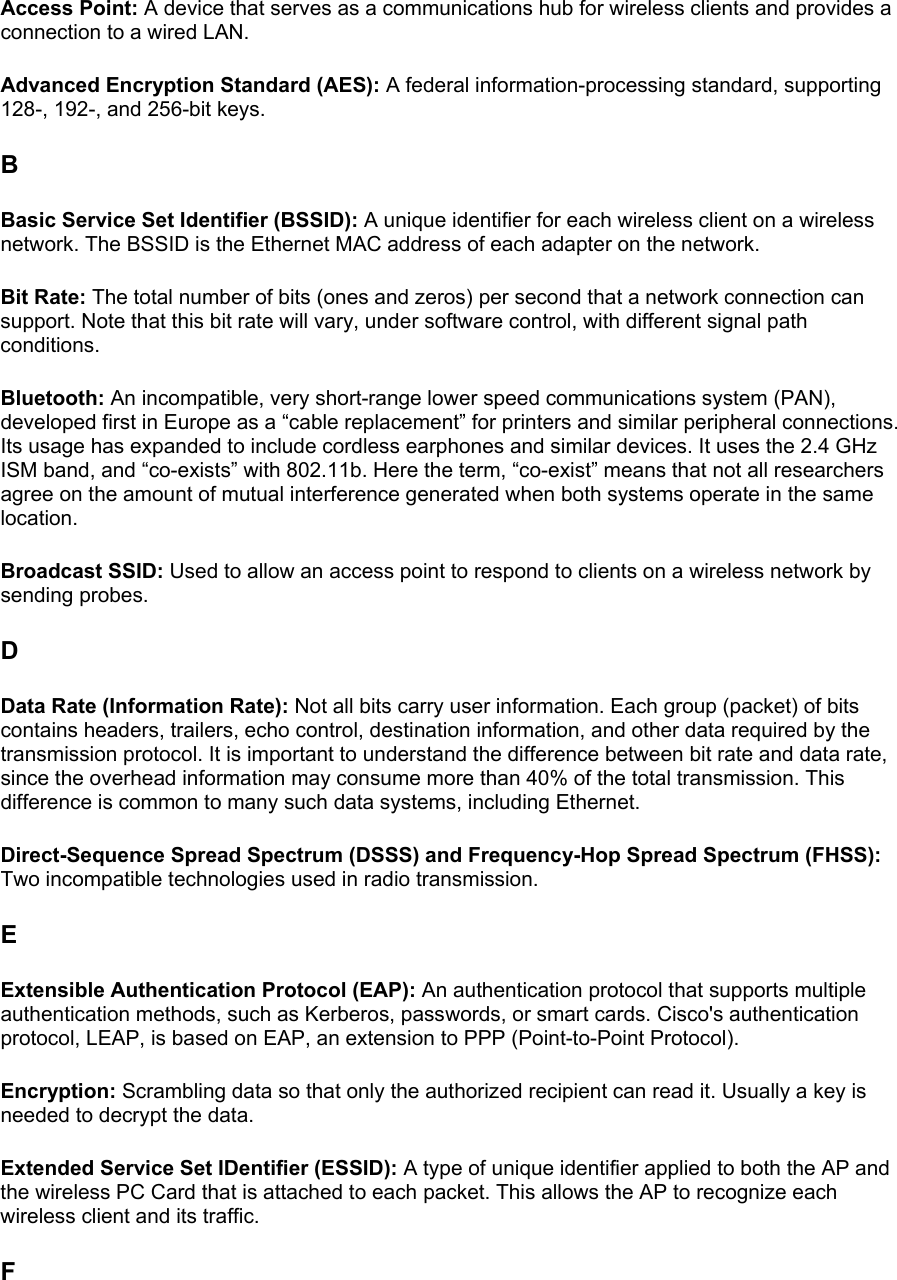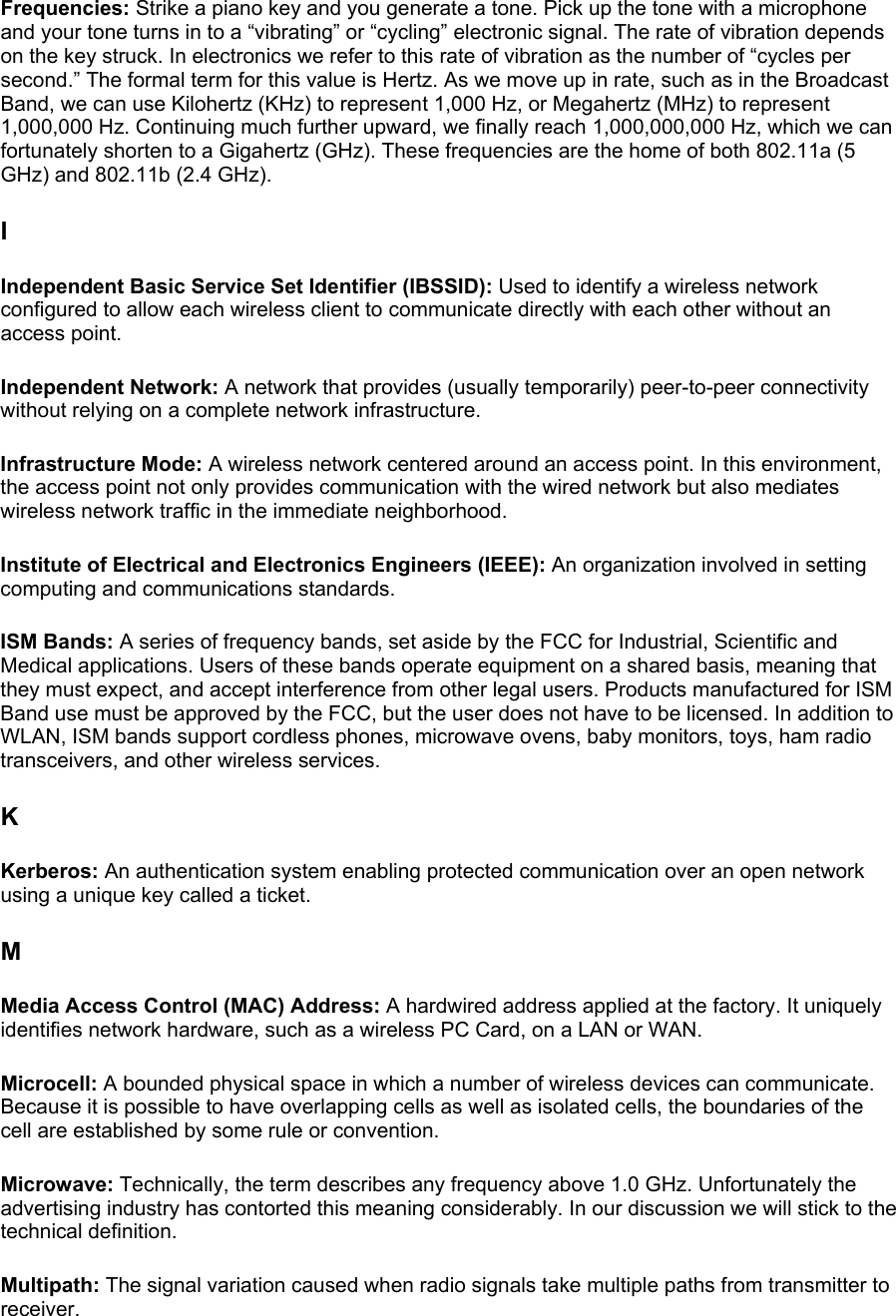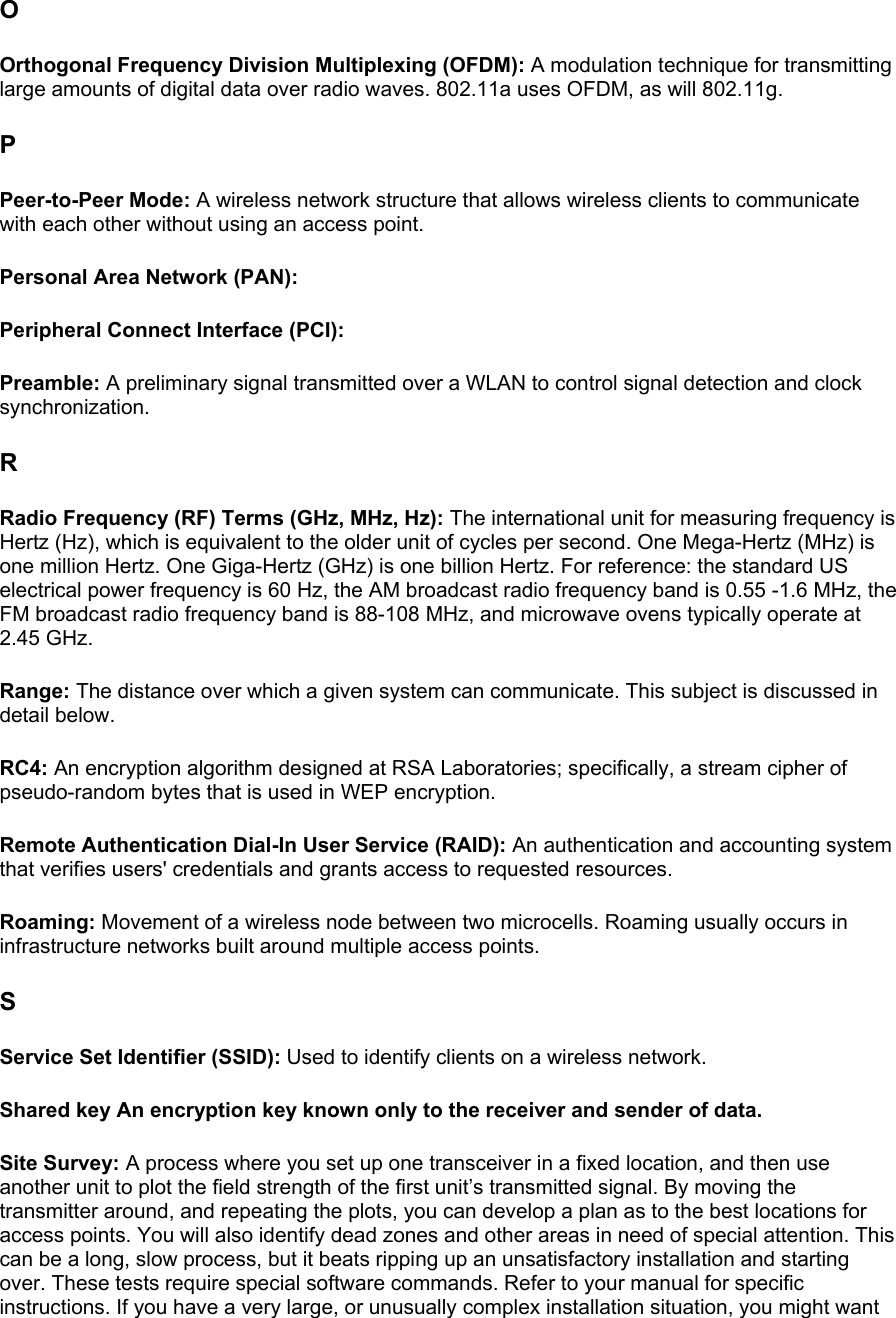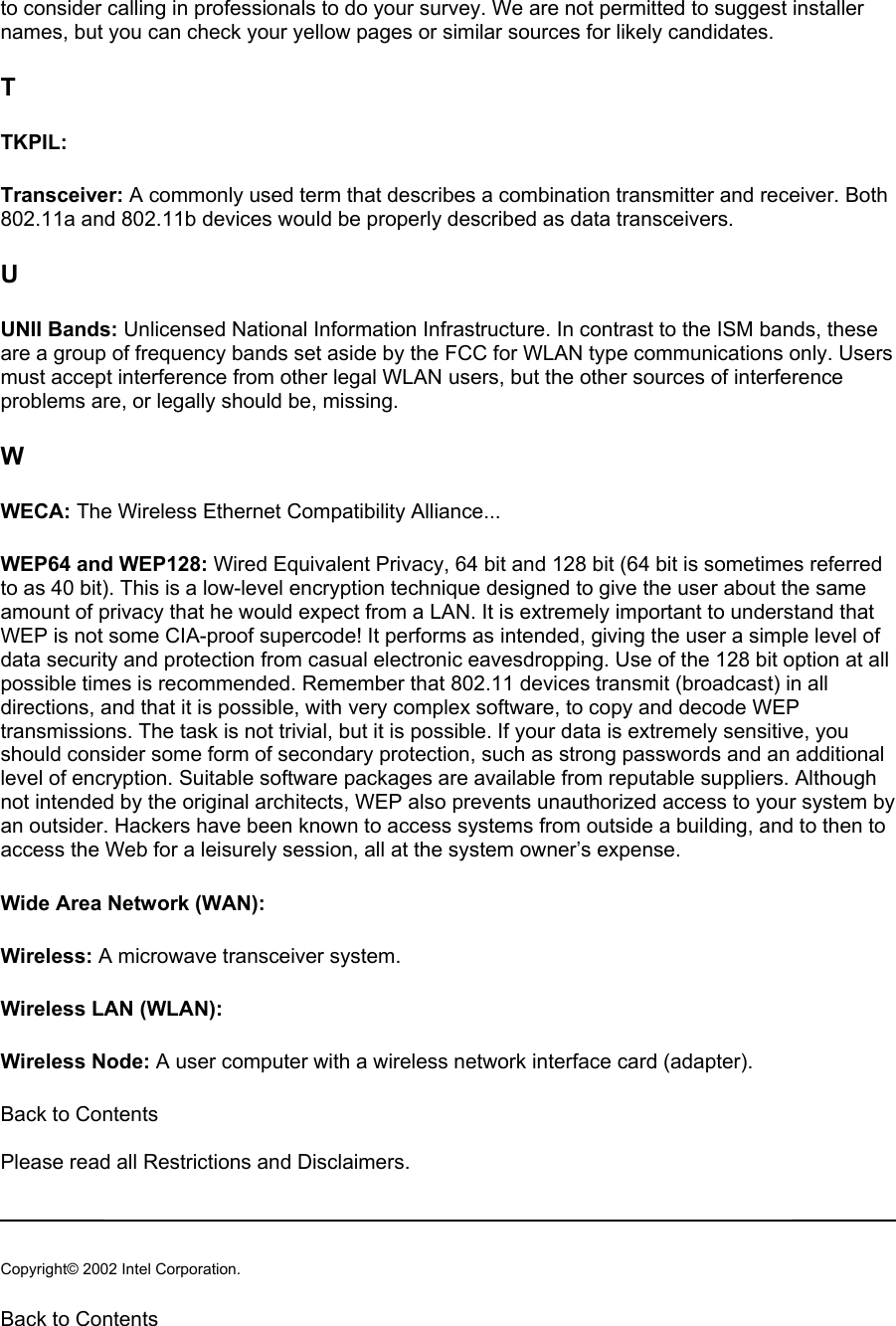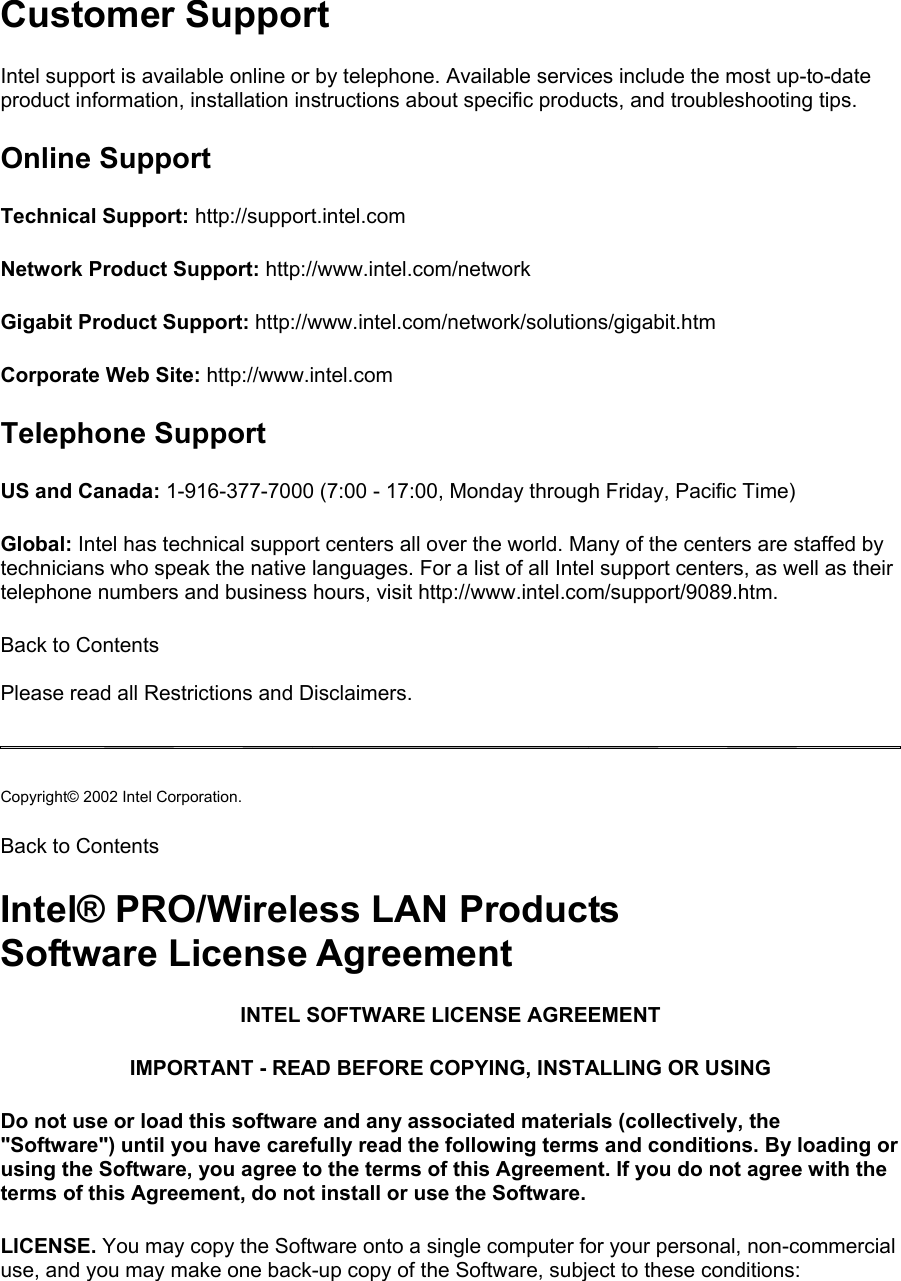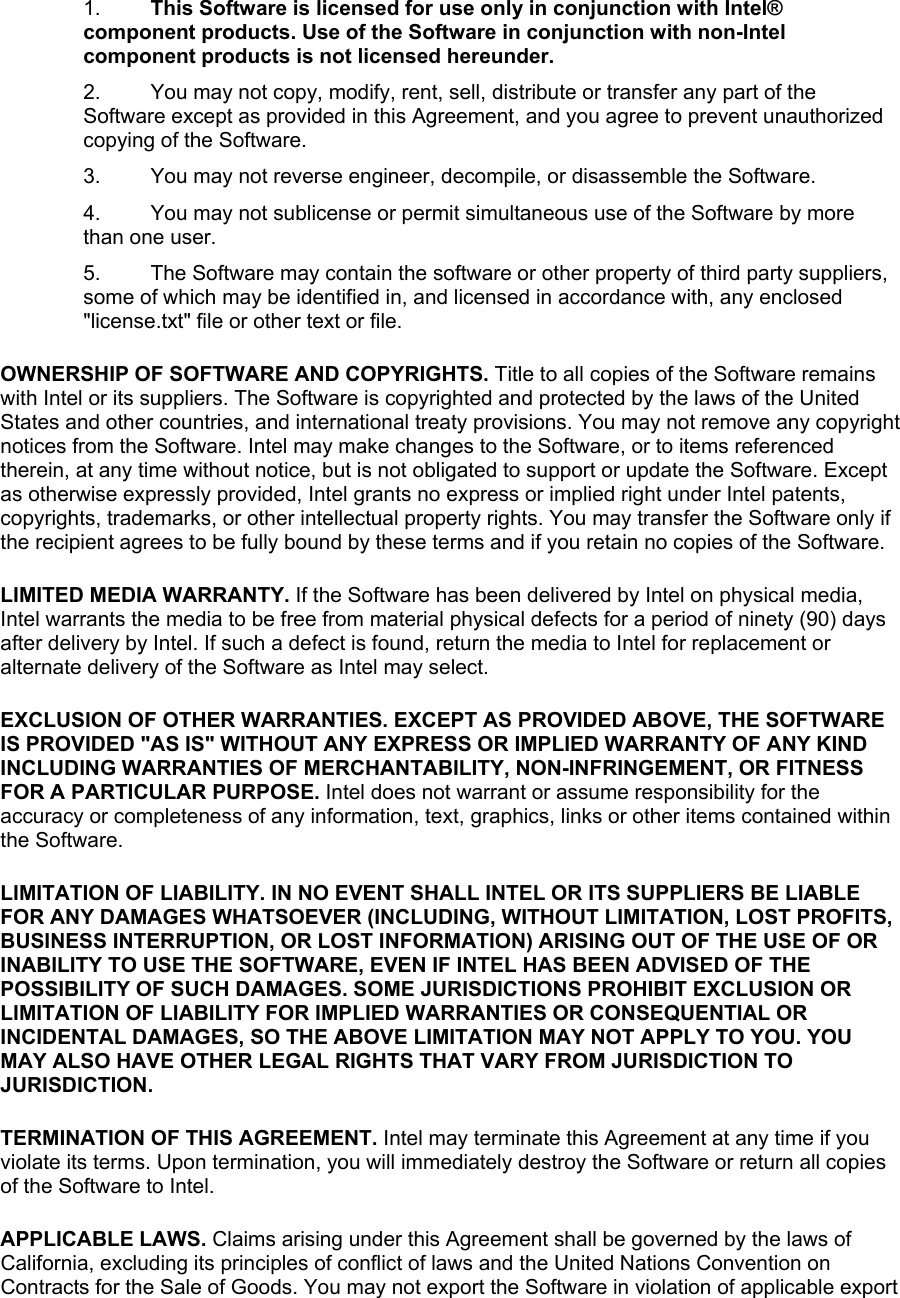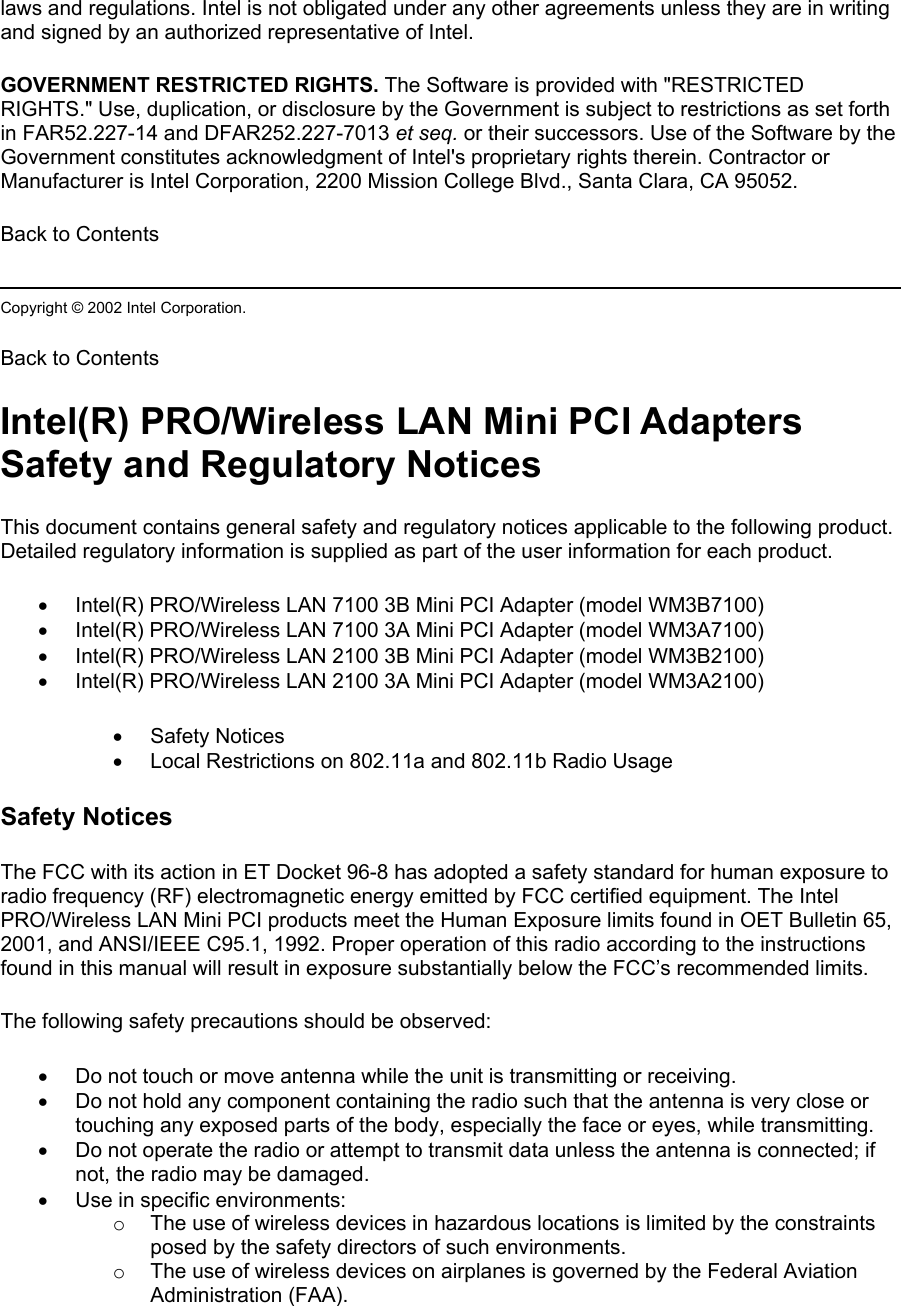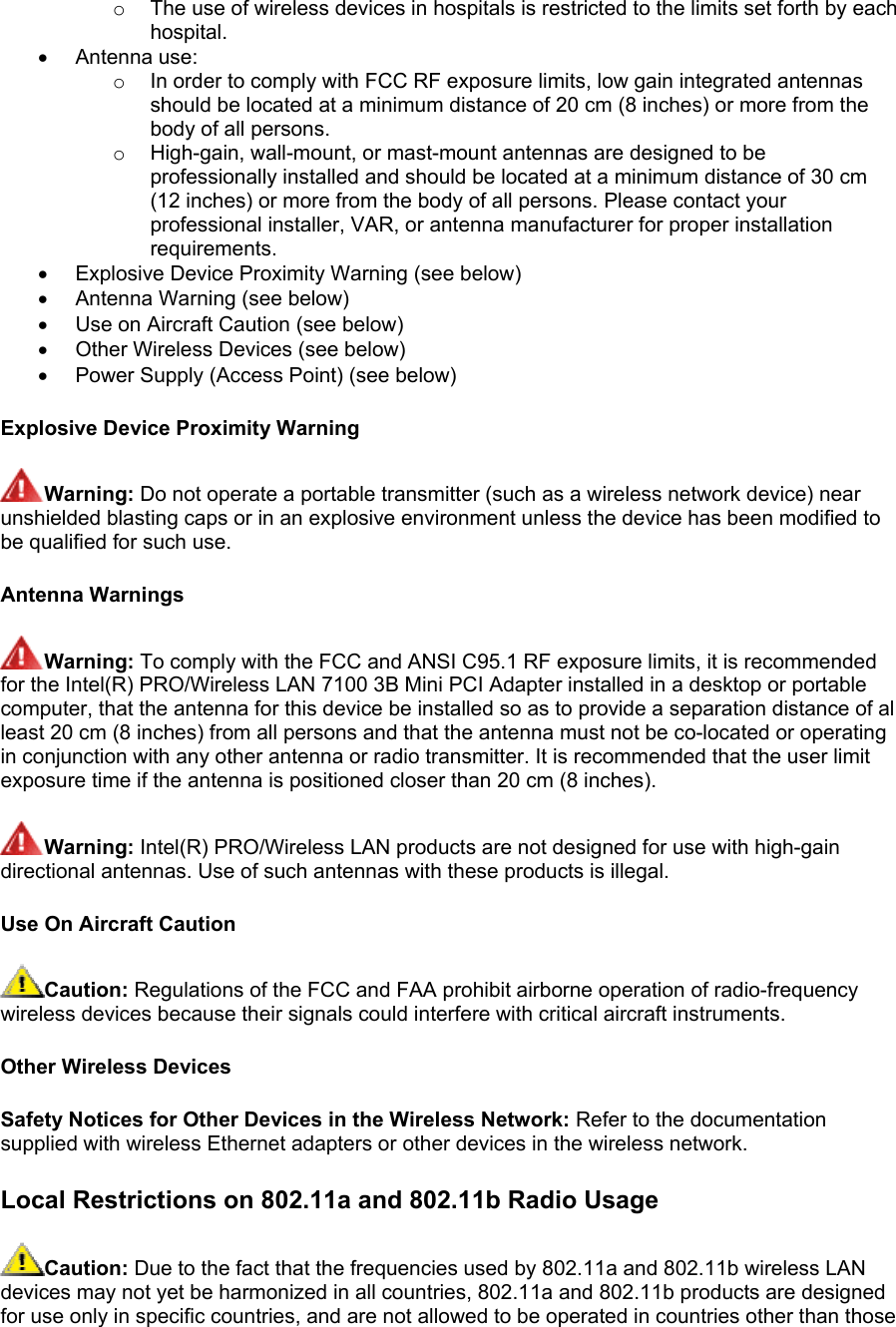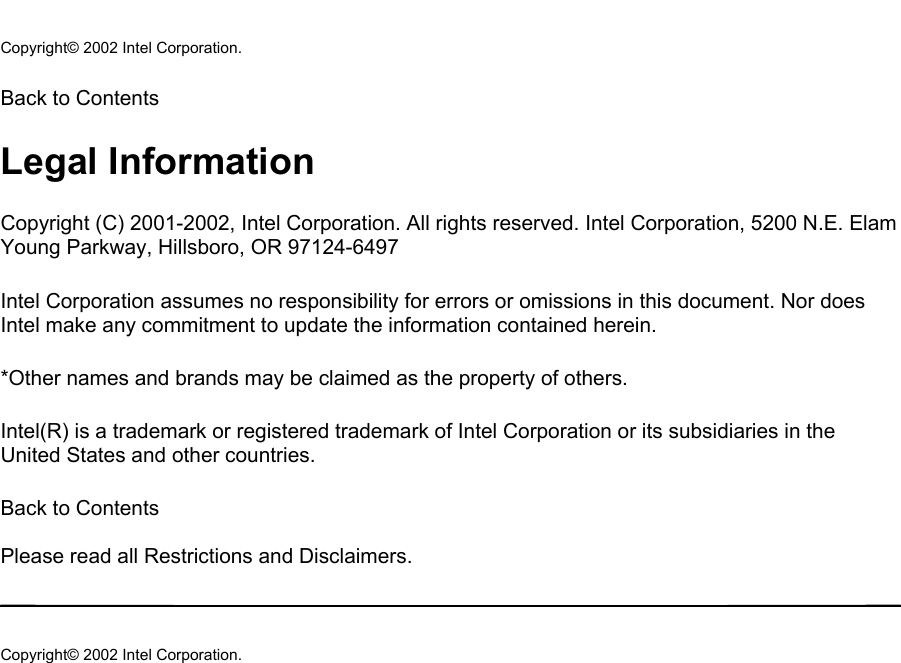Sony Group PCG571Z Notebook Computer with WLAN and Bluetooth User Manual Wireless LAN 7100 Mini PCI Adapter User Guide
Sony Corporation Notebook Computer with WLAN and Bluetooth Wireless LAN 7100 Mini PCI Adapter User Guide
Contents
OEM installation manual Calexico 1
![Intel(R) PRO/Wireless LAN Mini PCI Adapter User's Guide [Preliminary Draft] The Intel(R) PRO/Wireless LAN Mini PCI Adapter is a wireless device that operates at 5 and 2.4 GHz. This adapter operates with high-capacity networks using multiple access points within large or small environments. Using the Intel(R) PROSet Windows utility you can configure, manage wireless local area network (WLAN) management tasks, adapter switching functions, and connections. Wireless LAN General Information About Wireless LAN Technology Adapter Setup and Configuration Software Installation Using PROSet Connecting to a Network Security Overview Setting Up Security Troubleshooting Specifications Glossary Support and Warranty Customer Support Software License Safety and Regulatory Notices Limited Warranty Legal Notices Copyright © 2002 Intel Corporation. All rights reserved. Intel Corporation, 5200 N.E. Elam Young Parkway, Hillsboro, OR 97124-6497 Intel Corporation assumes no responsibility for errors or omissions in this document. Nor does Intel make any commitment to update the information contained herein. Intel, Itanium, and Pentium are trademarks or registered trademarks of Intel Corporation or its subsidiaries in the United States and other countries. *Other names and brands may be claimed as the property of others. Back to Contents About Wireless LAN Technology • Choosing a WLAN • Configuring a WLAN • Identifying a WLAN • Surveying the Site of Your WLAN • Factors Affecting Range • Stronger Security](https://usermanual.wiki/Sony-Group/PCG571Z.OEM-installation-manual-Calexico-1/User-Guide-328875-Page-1.png)
